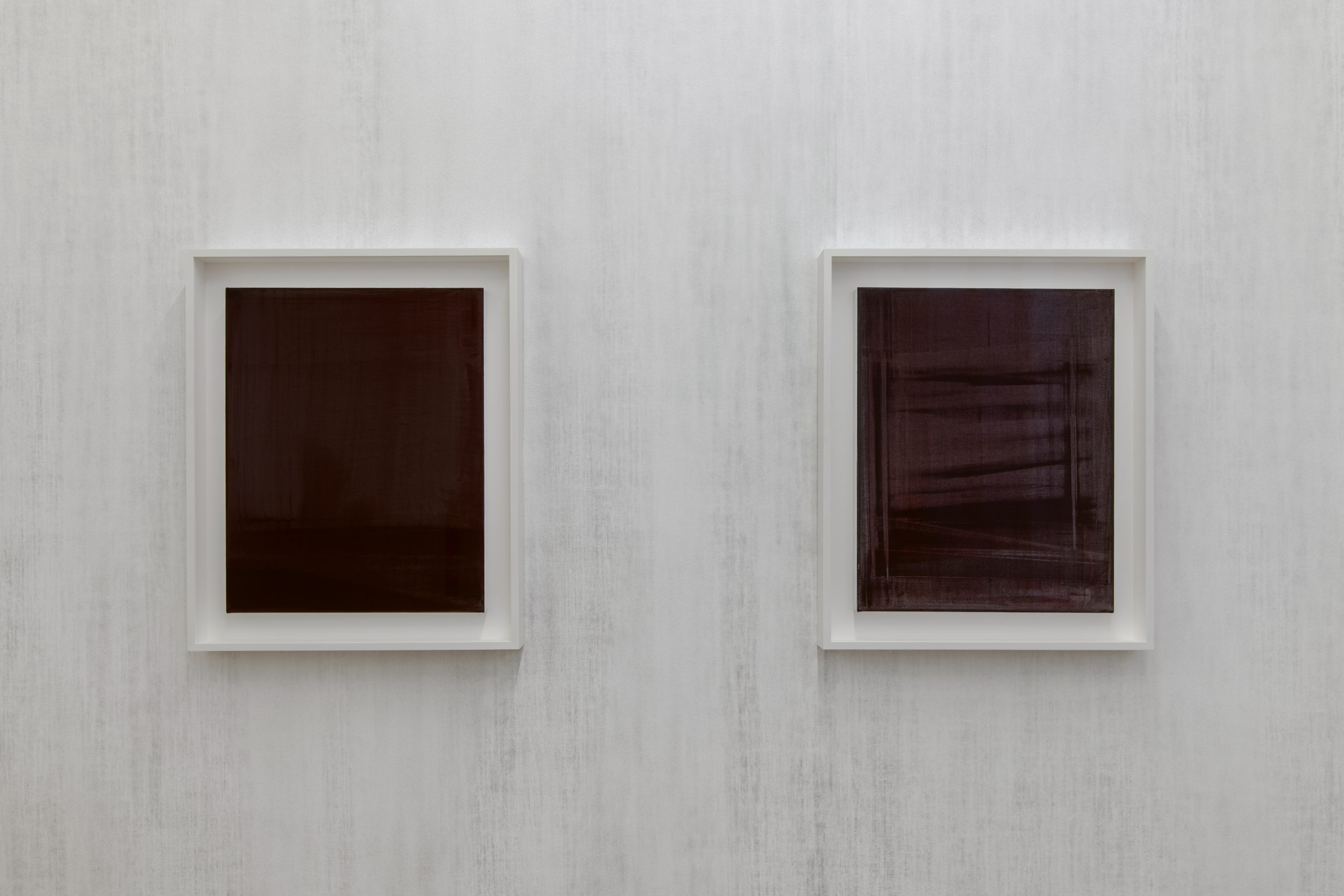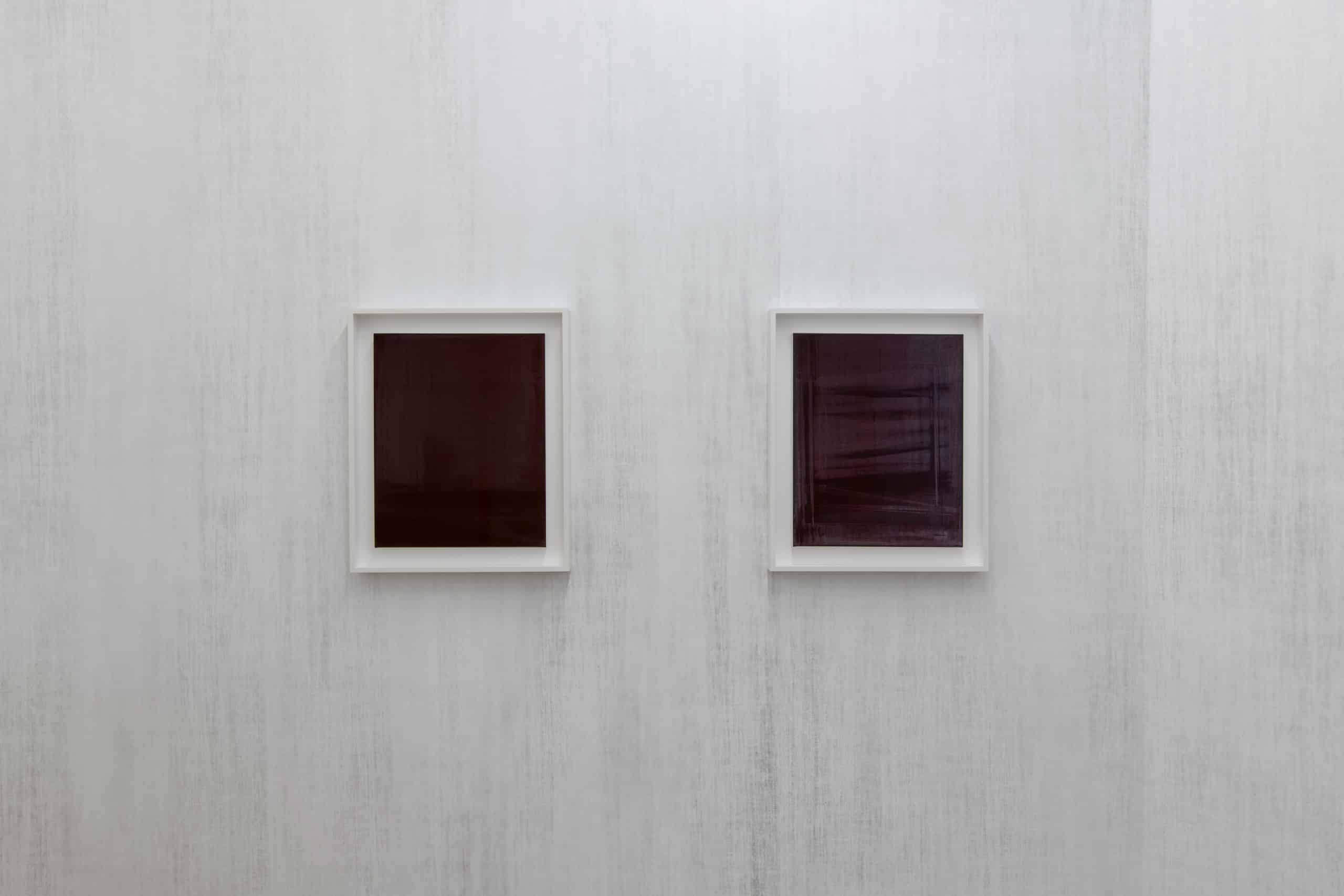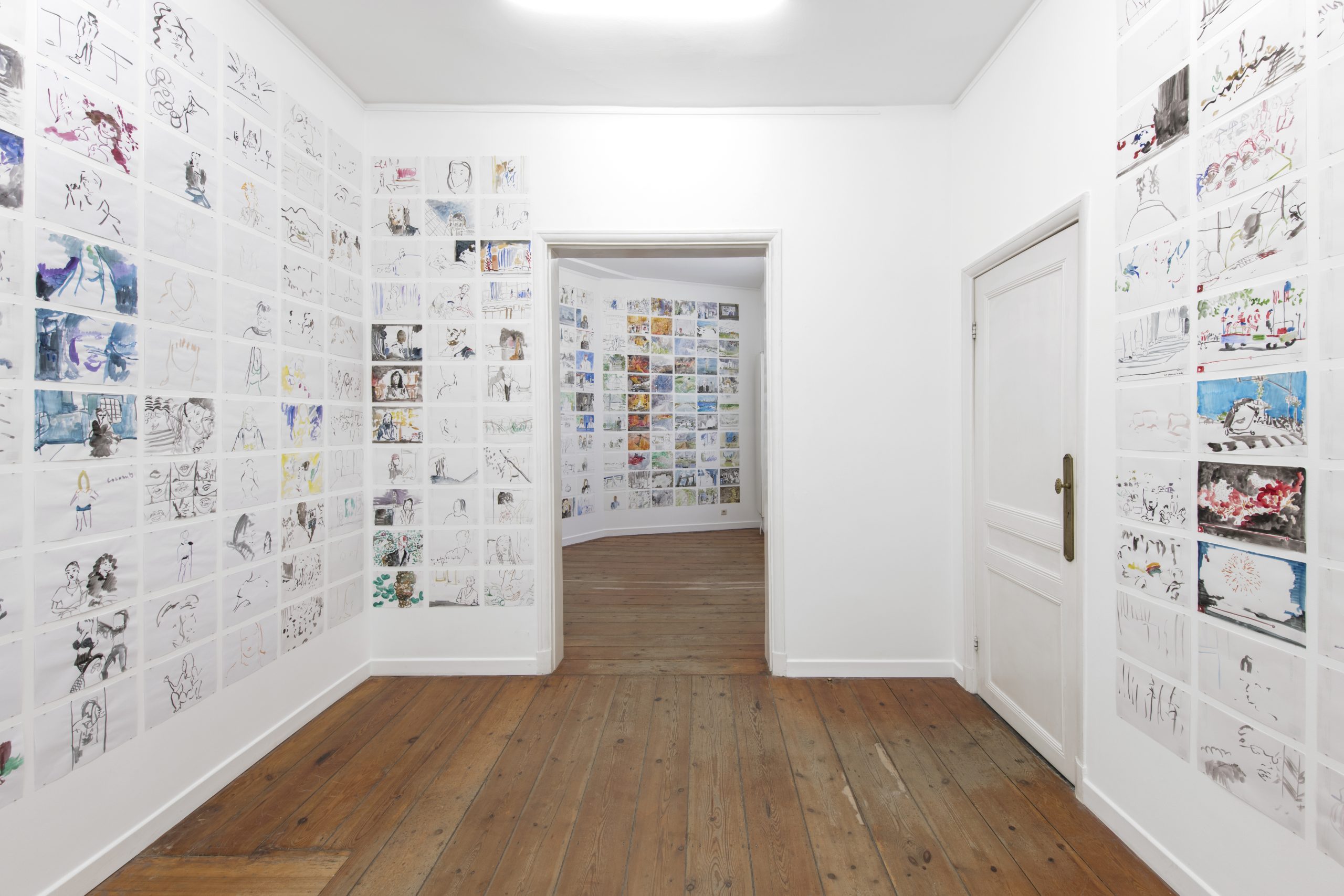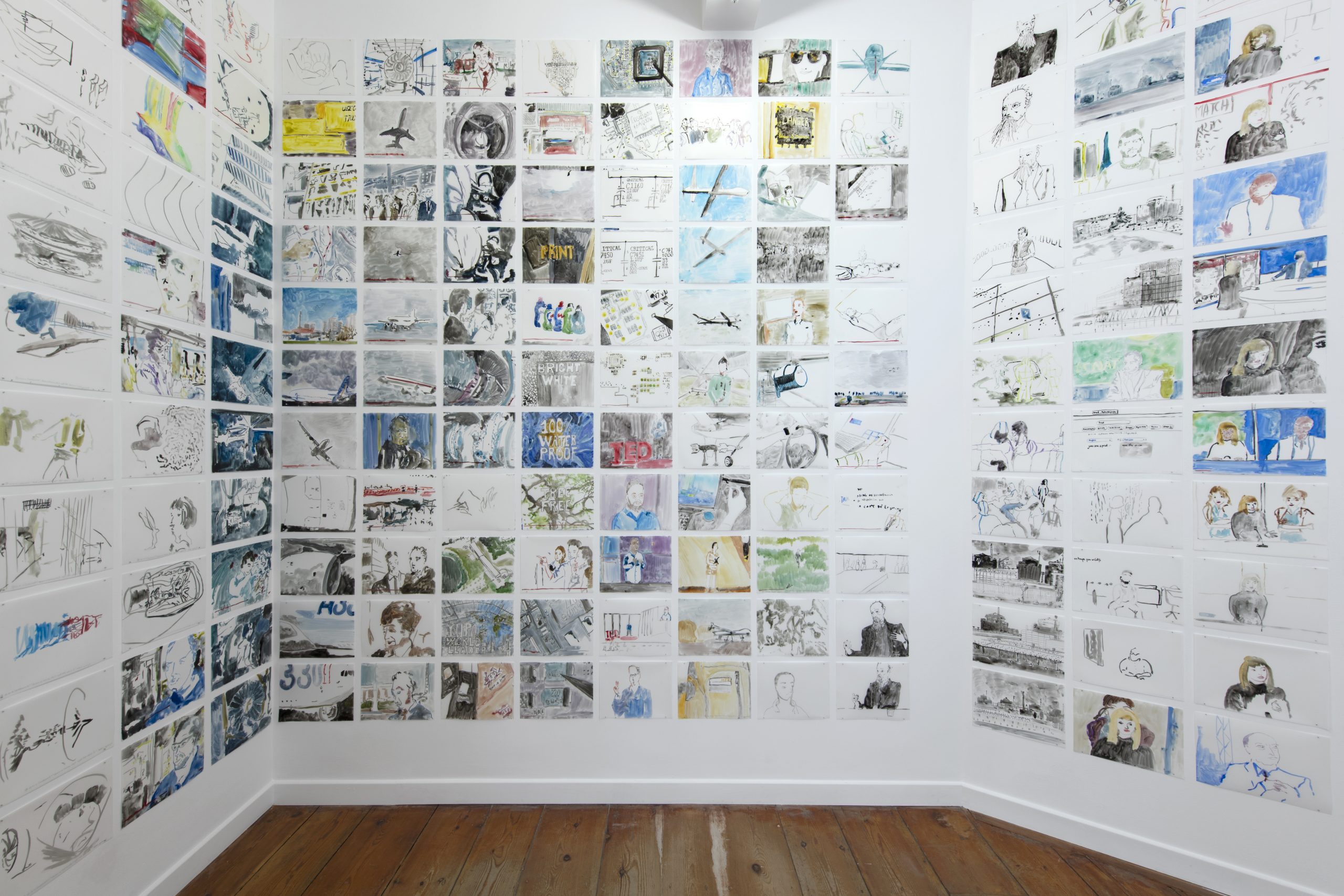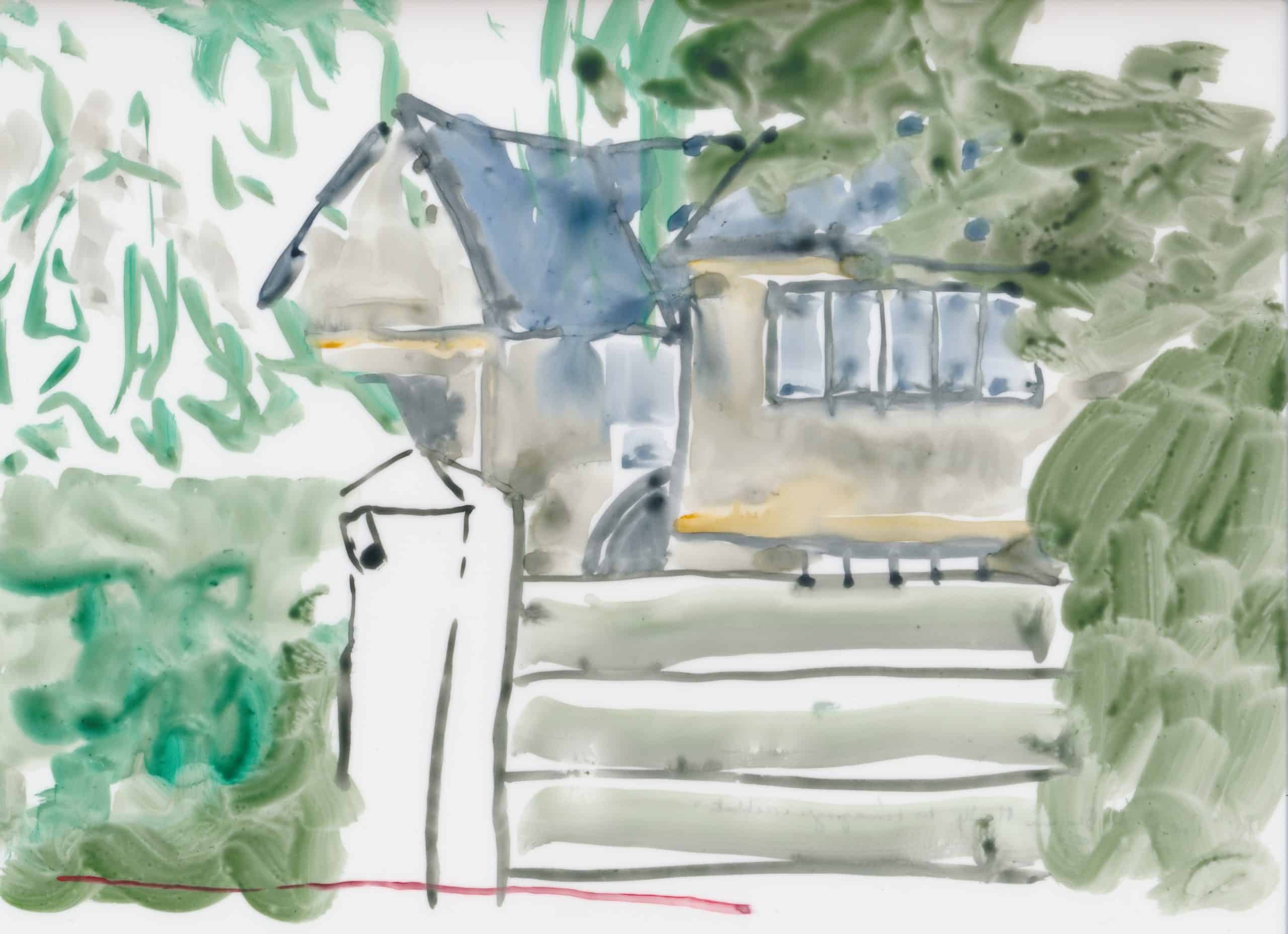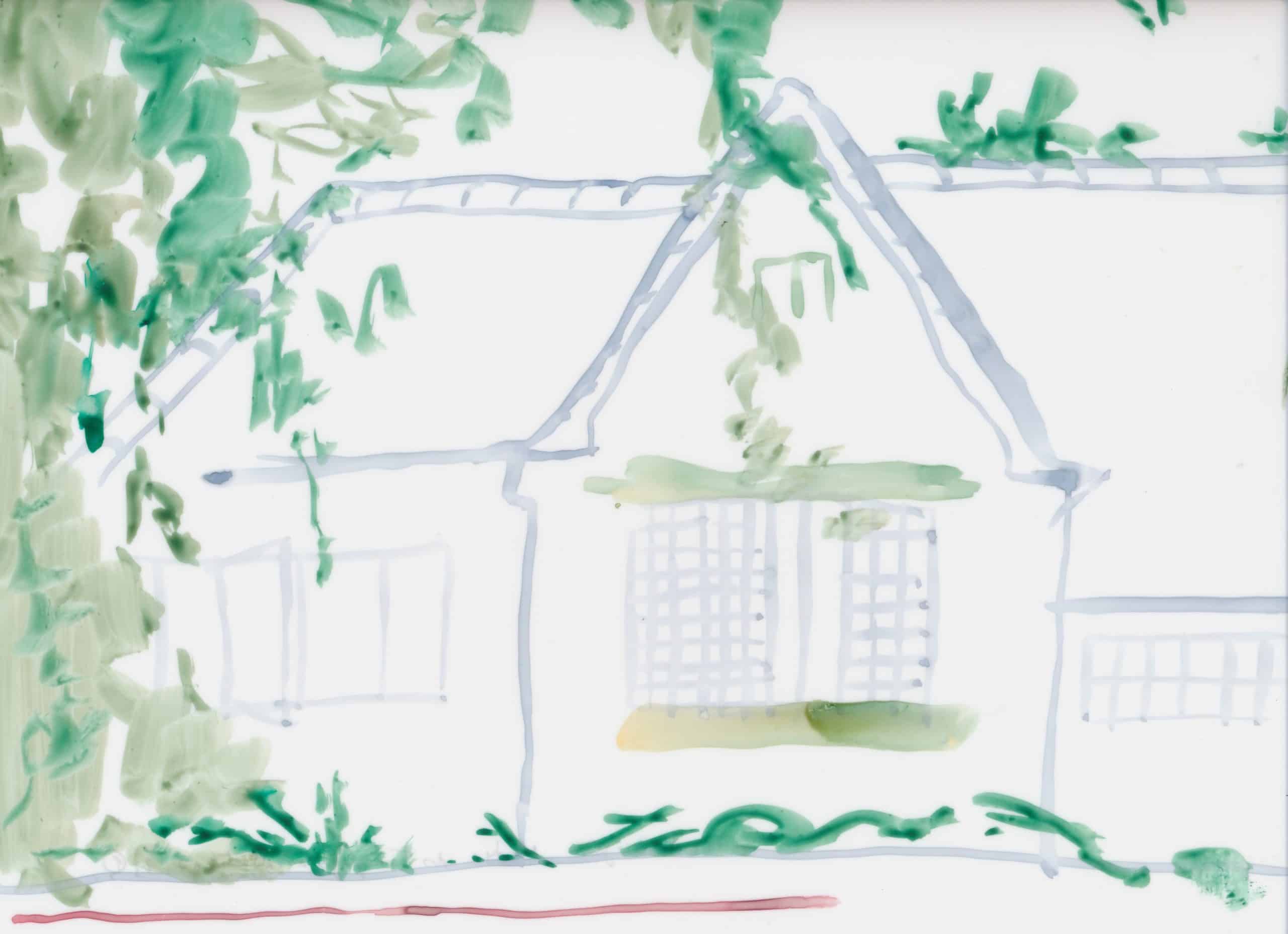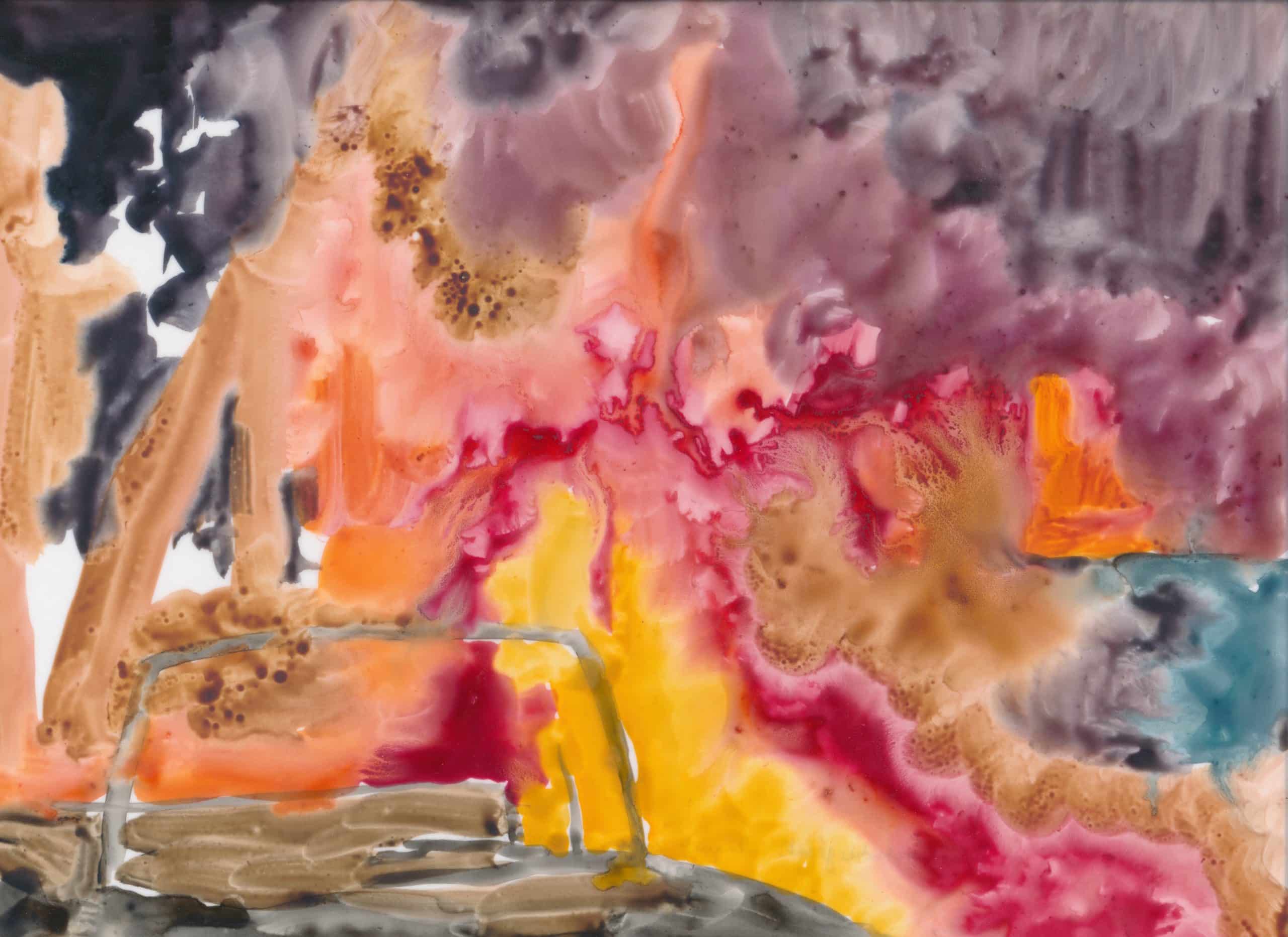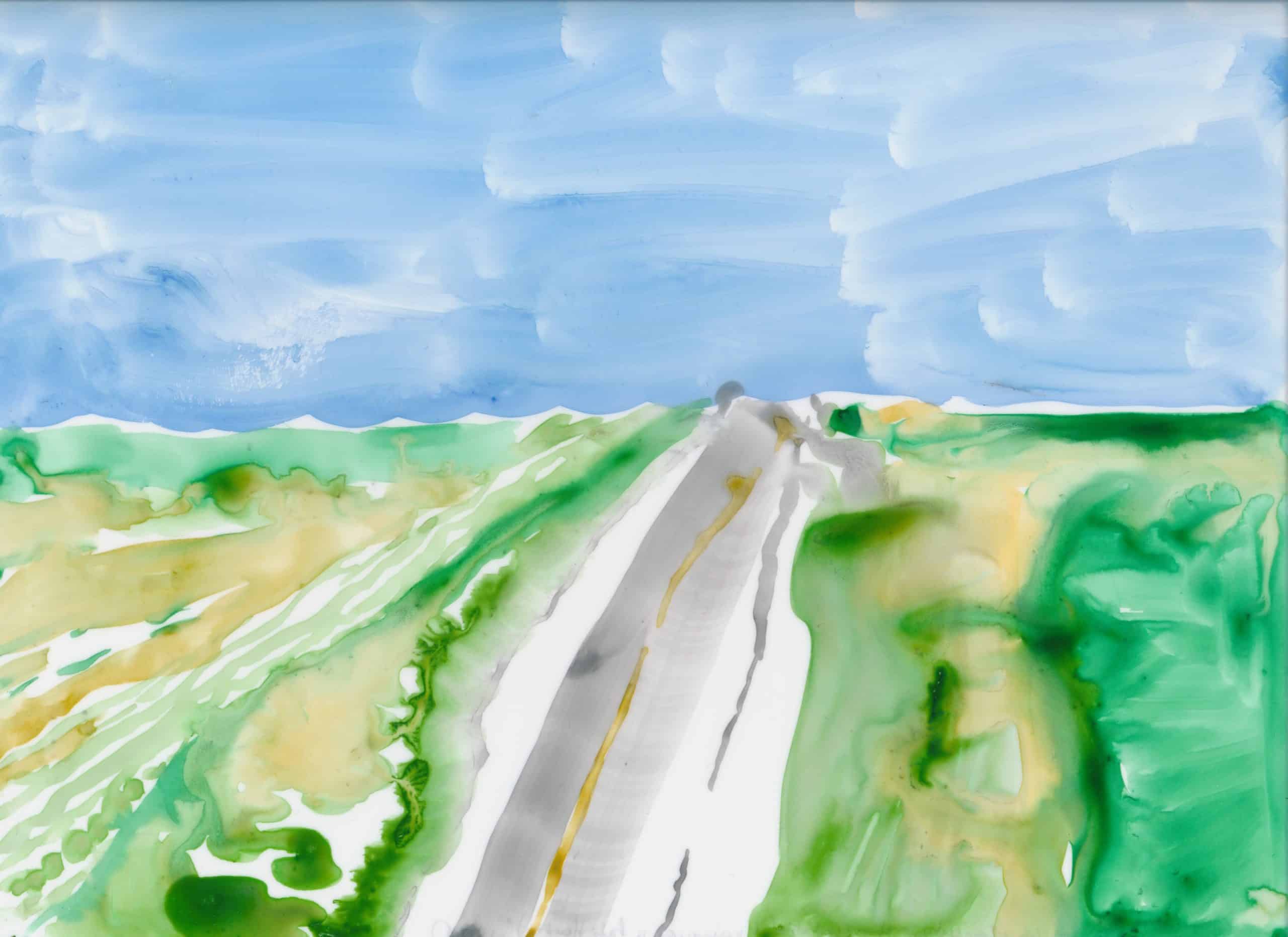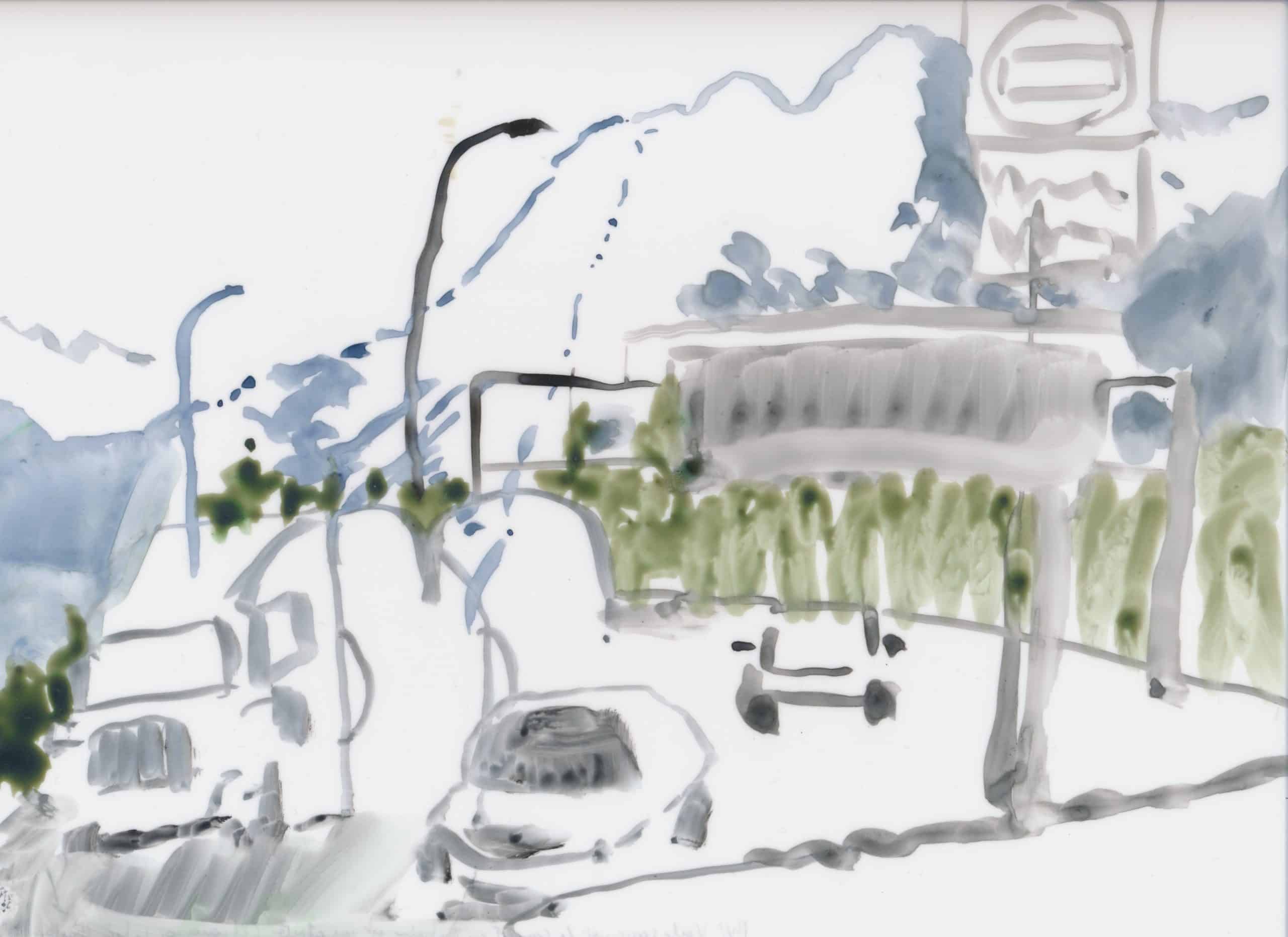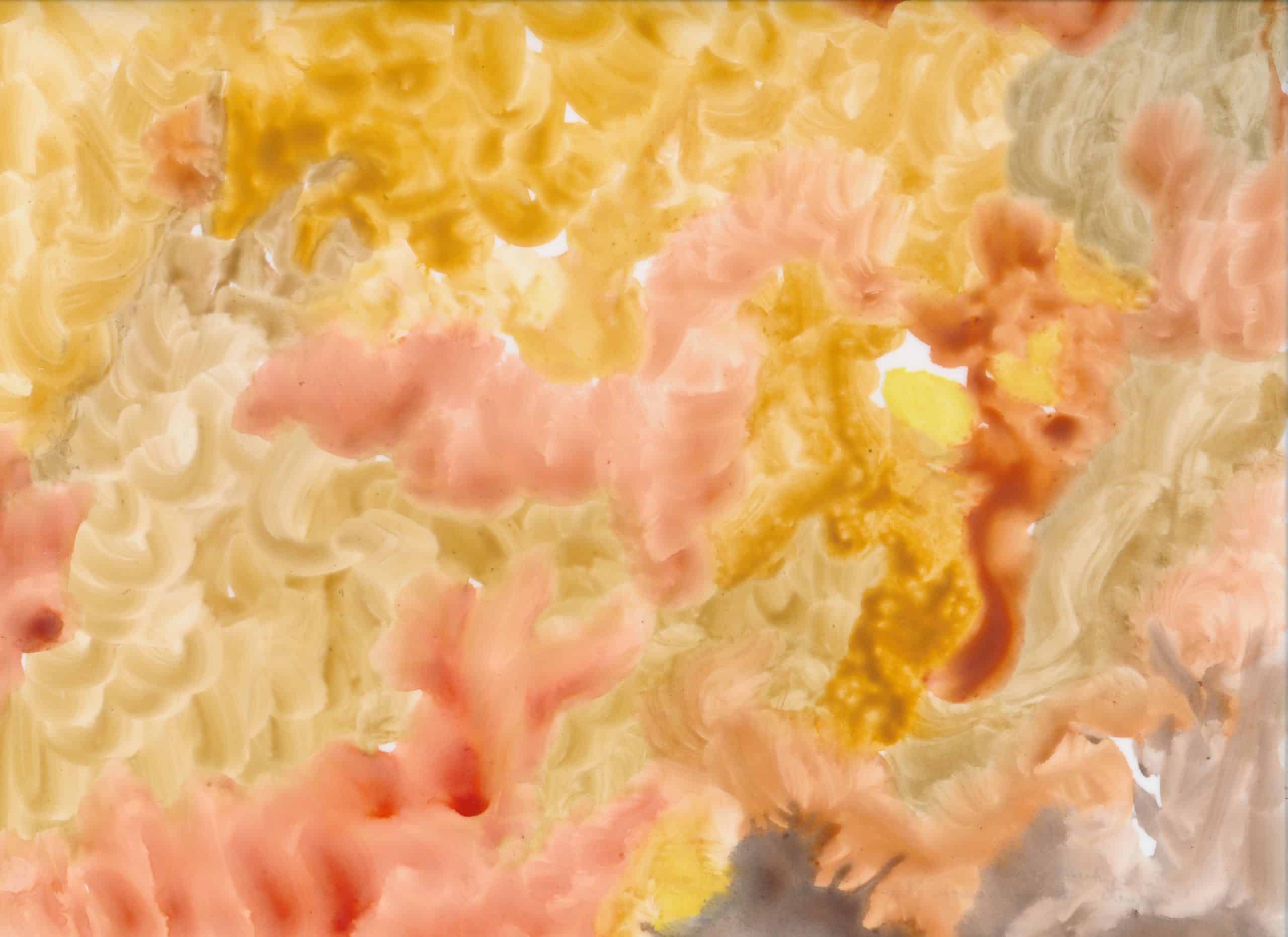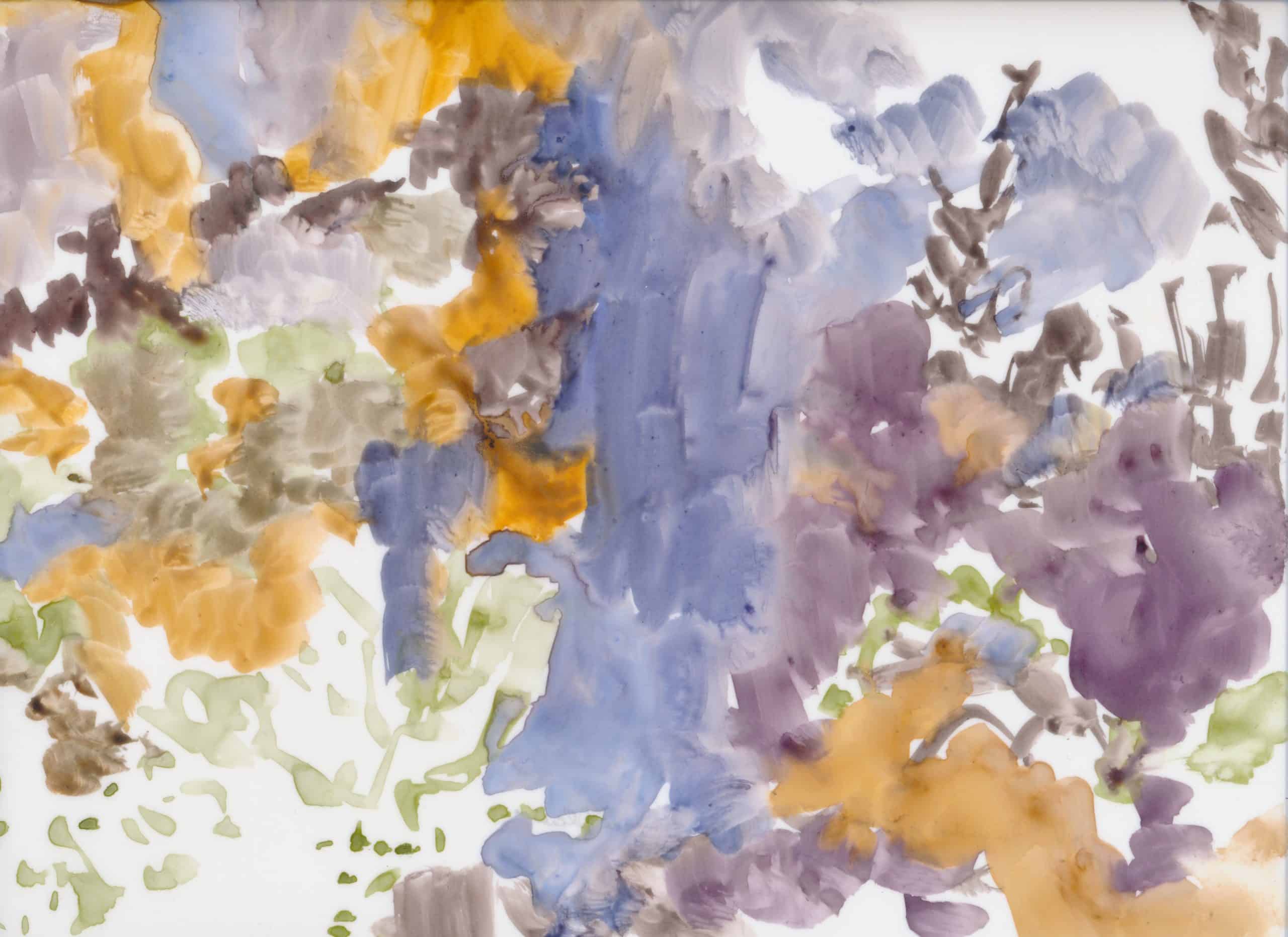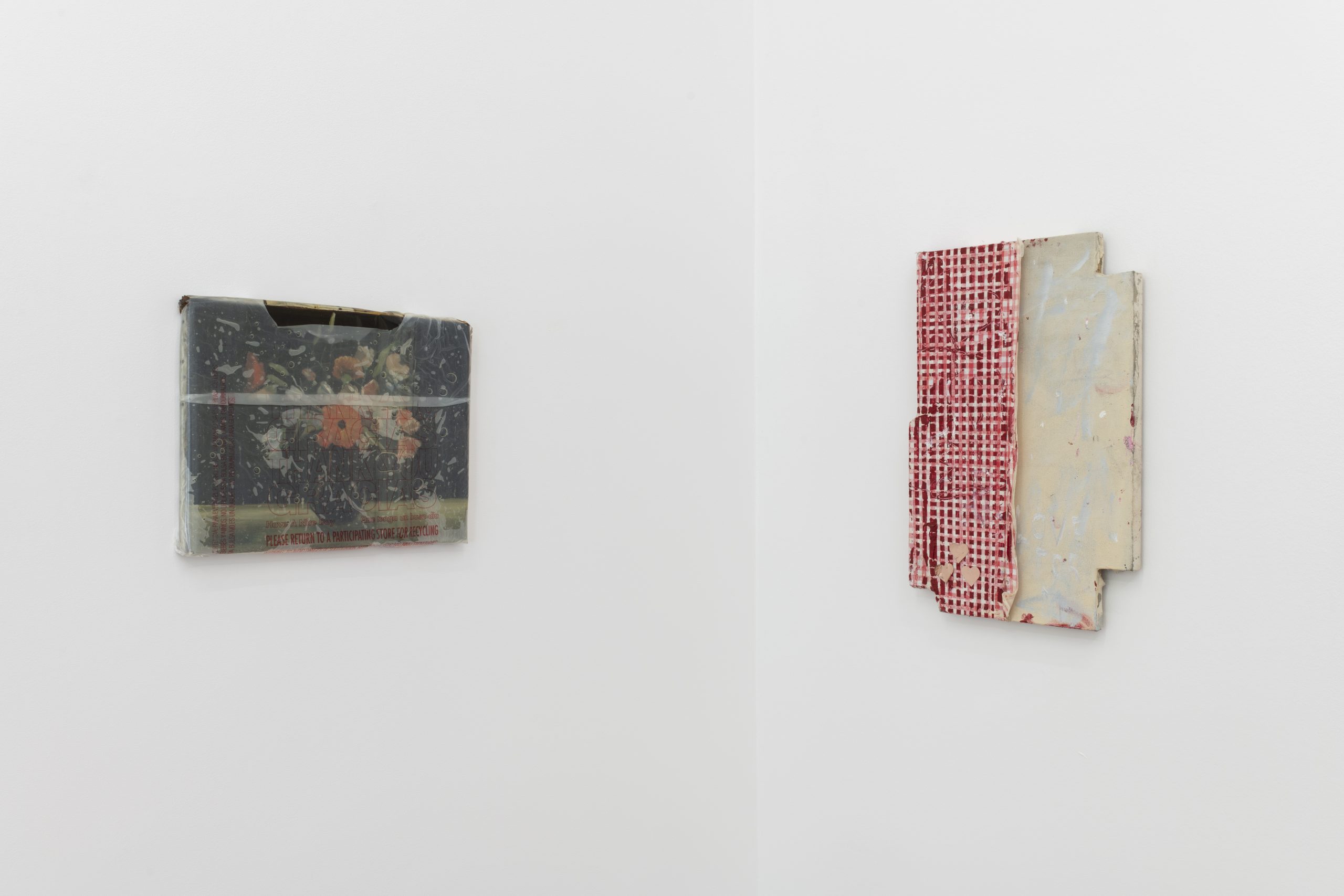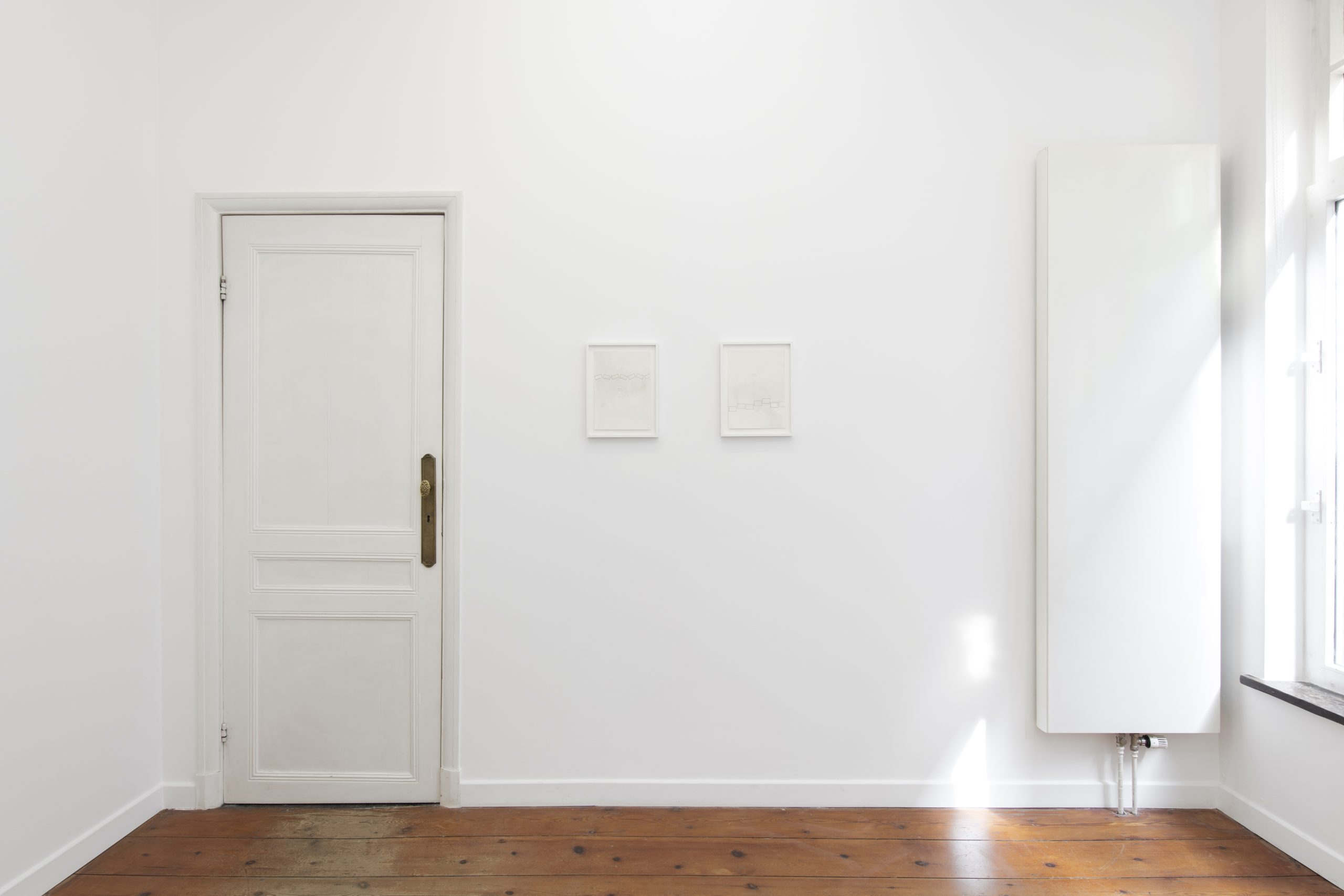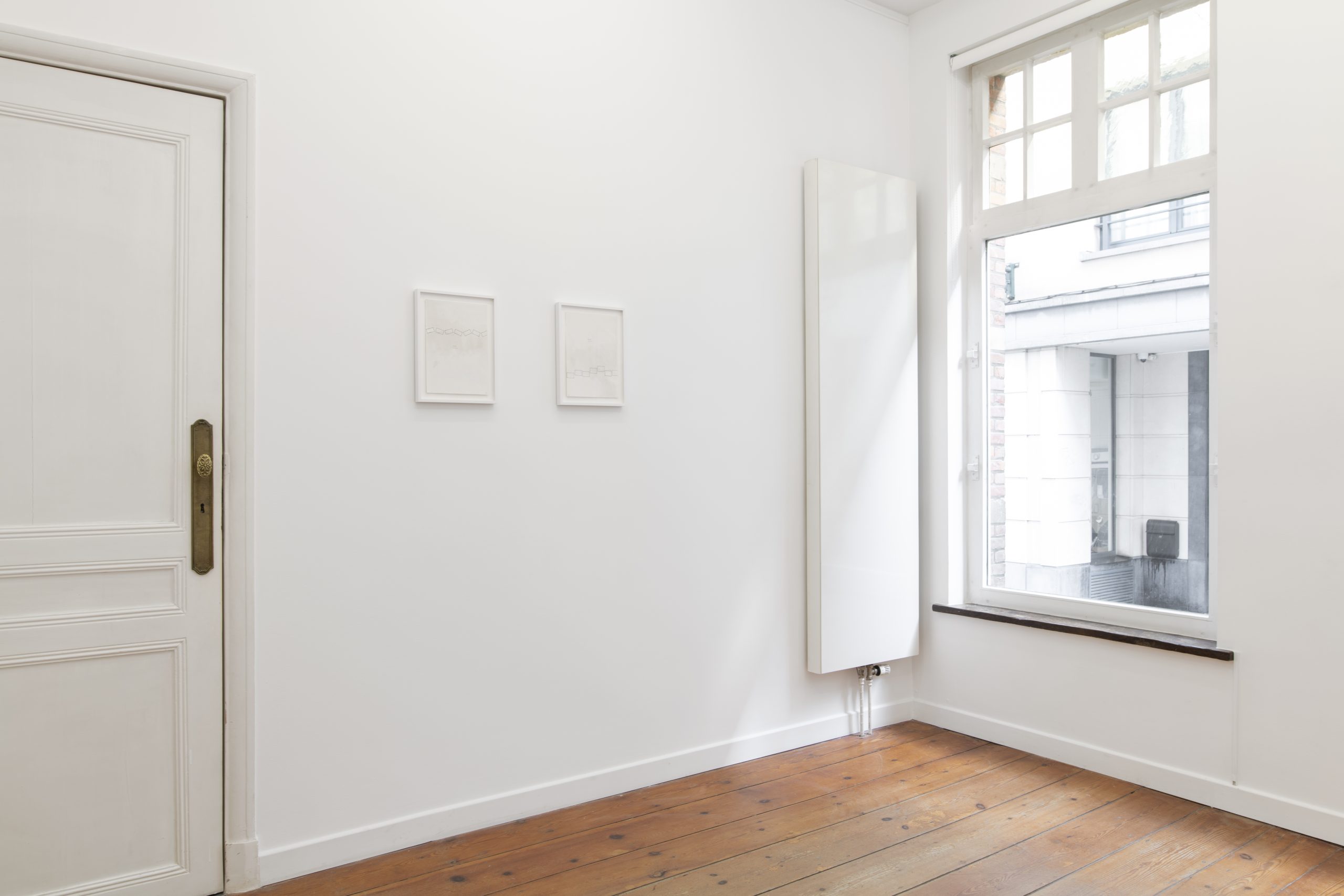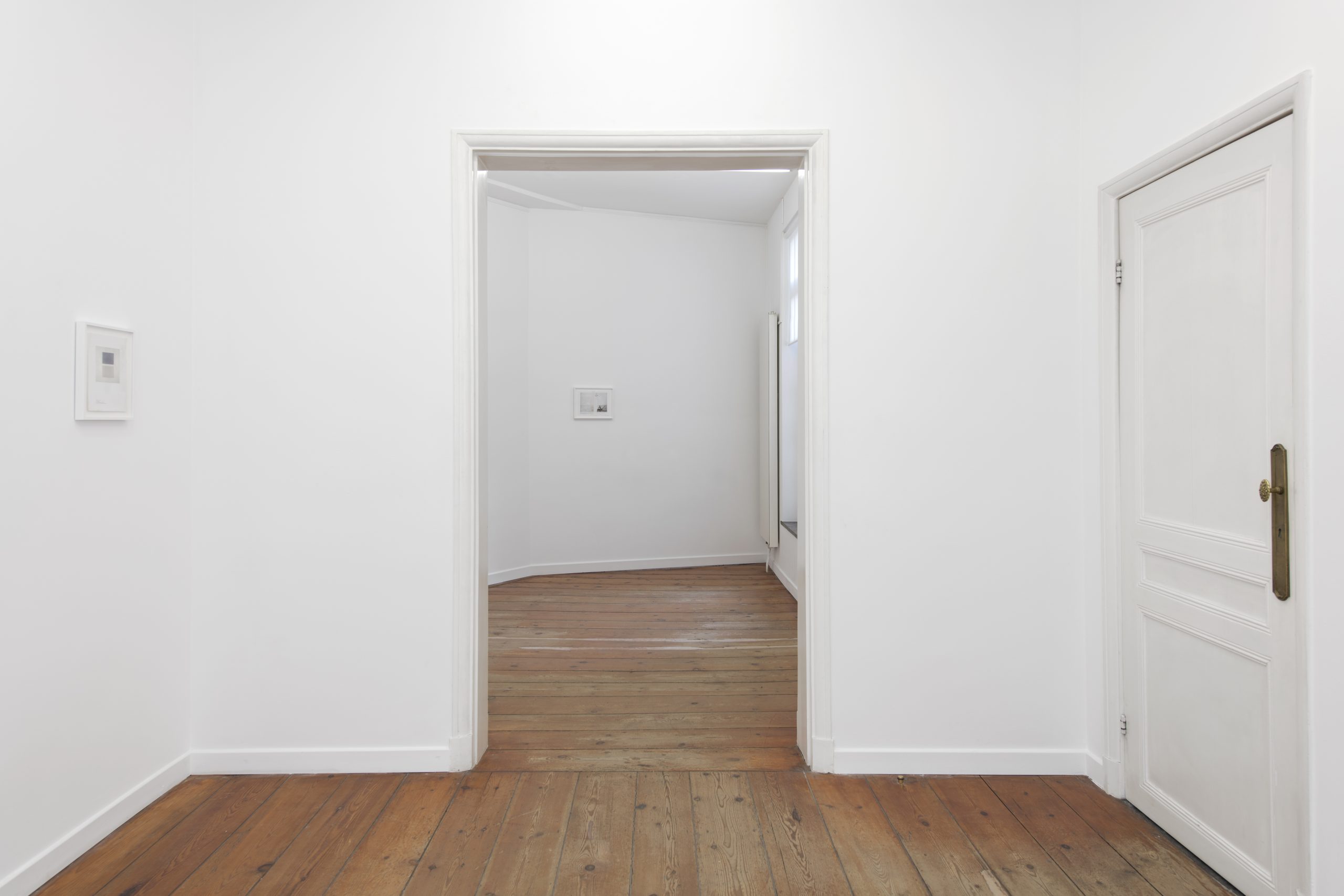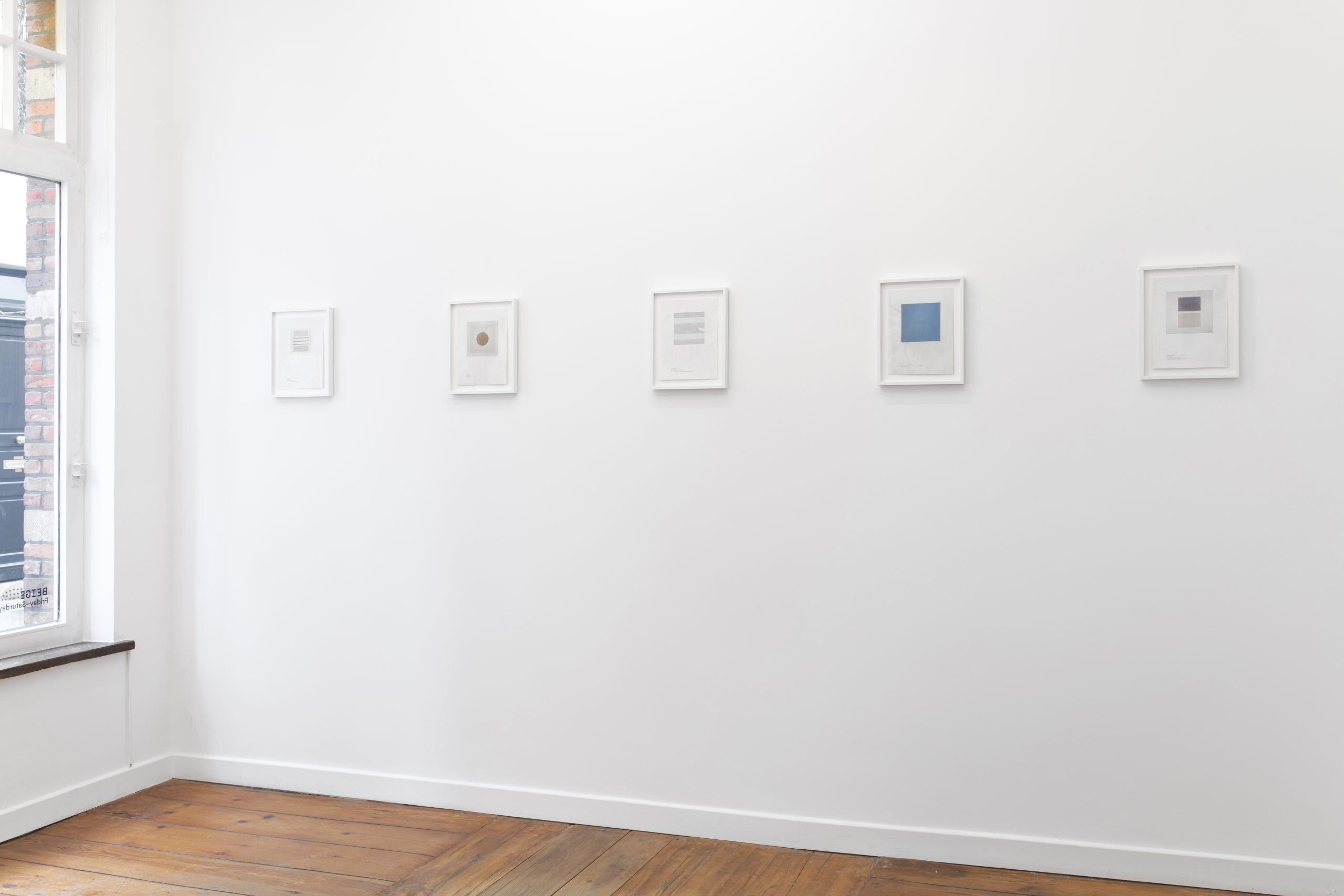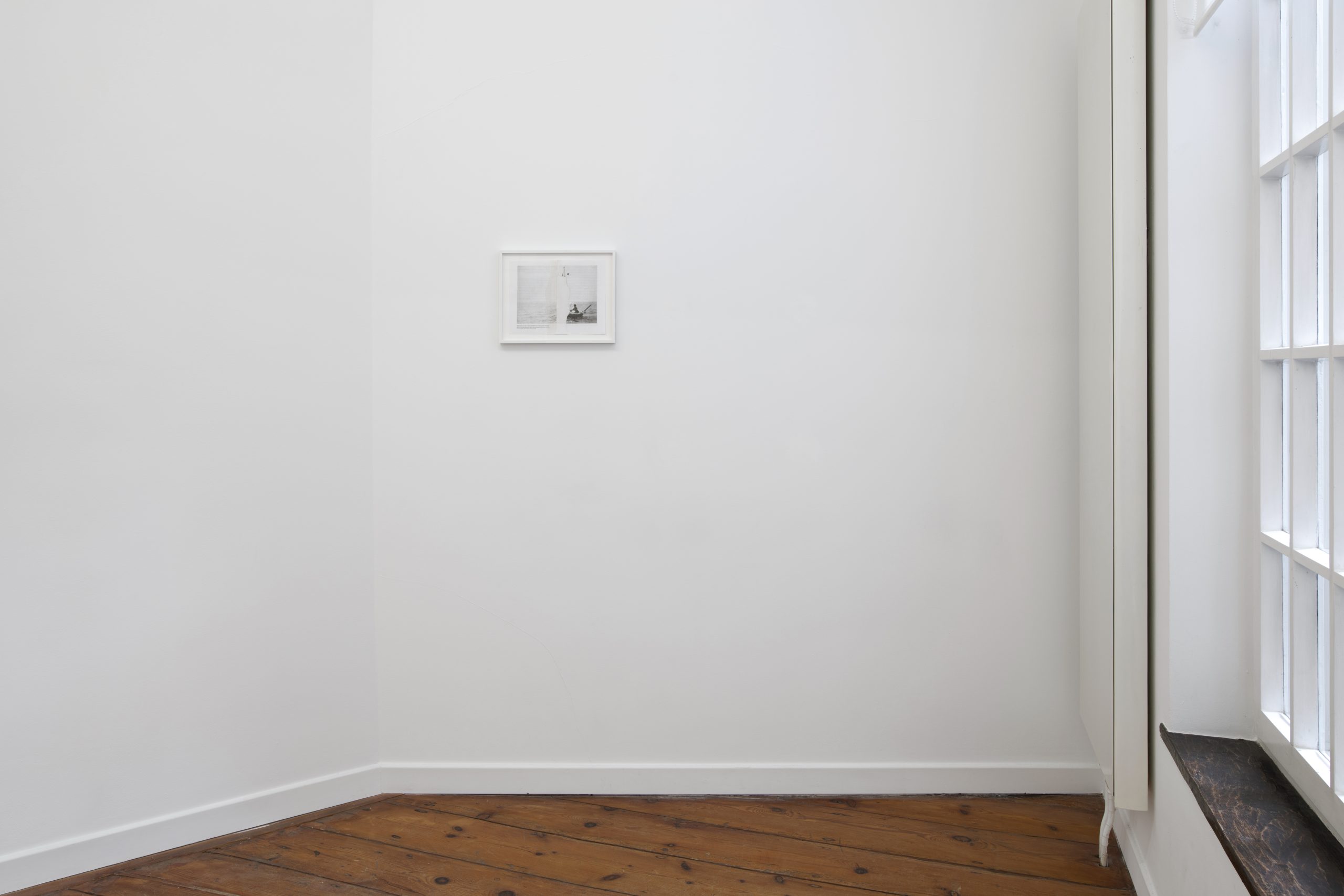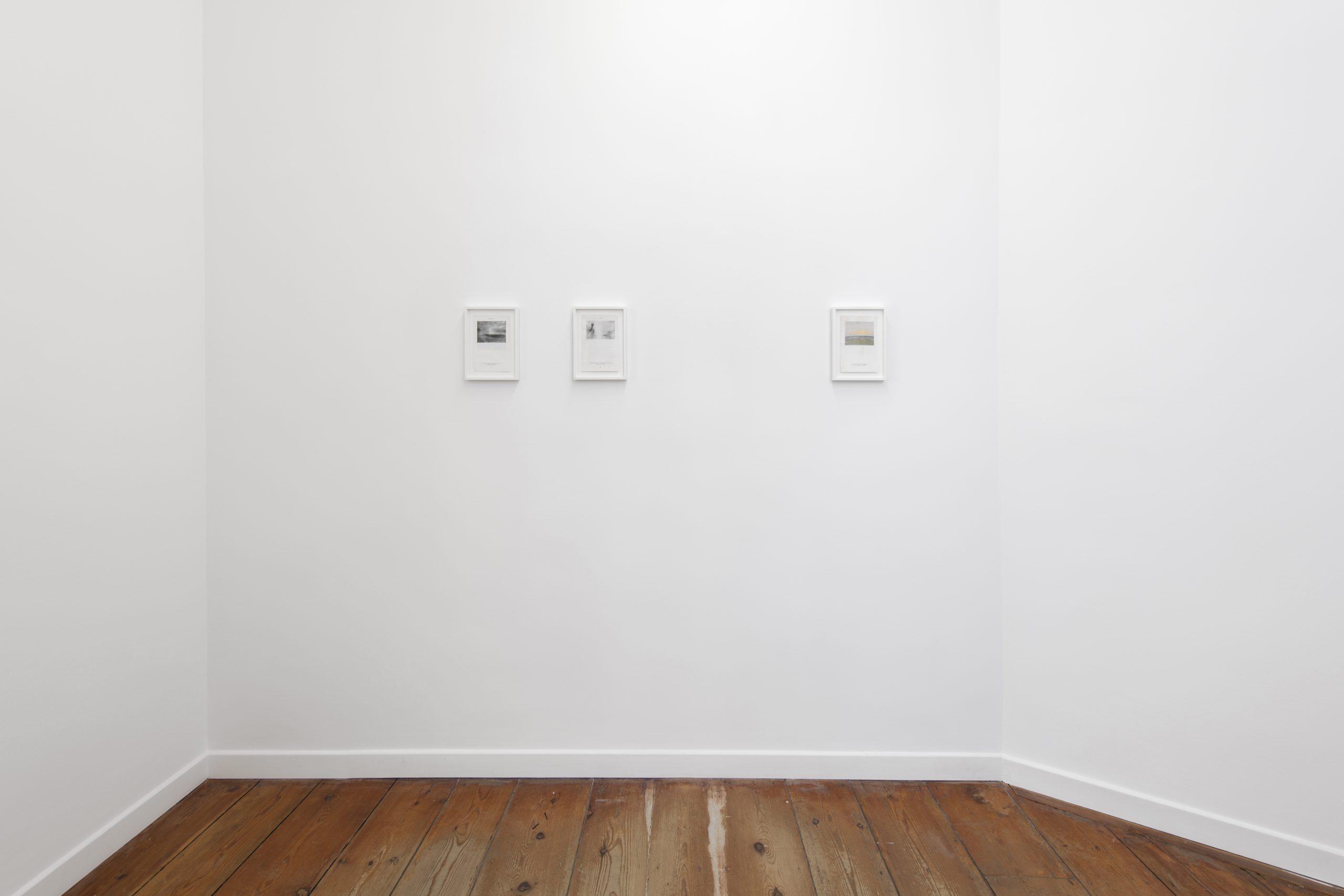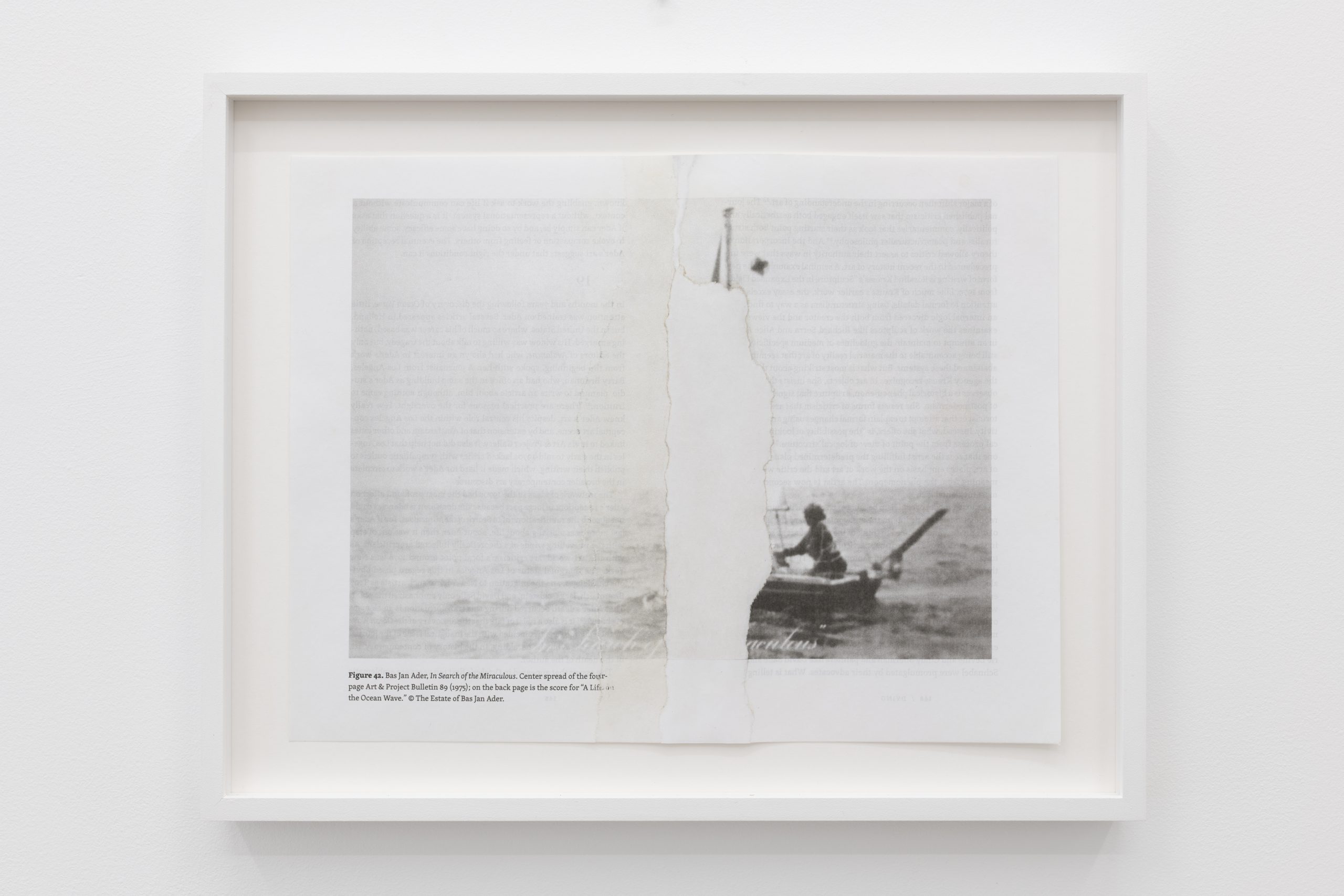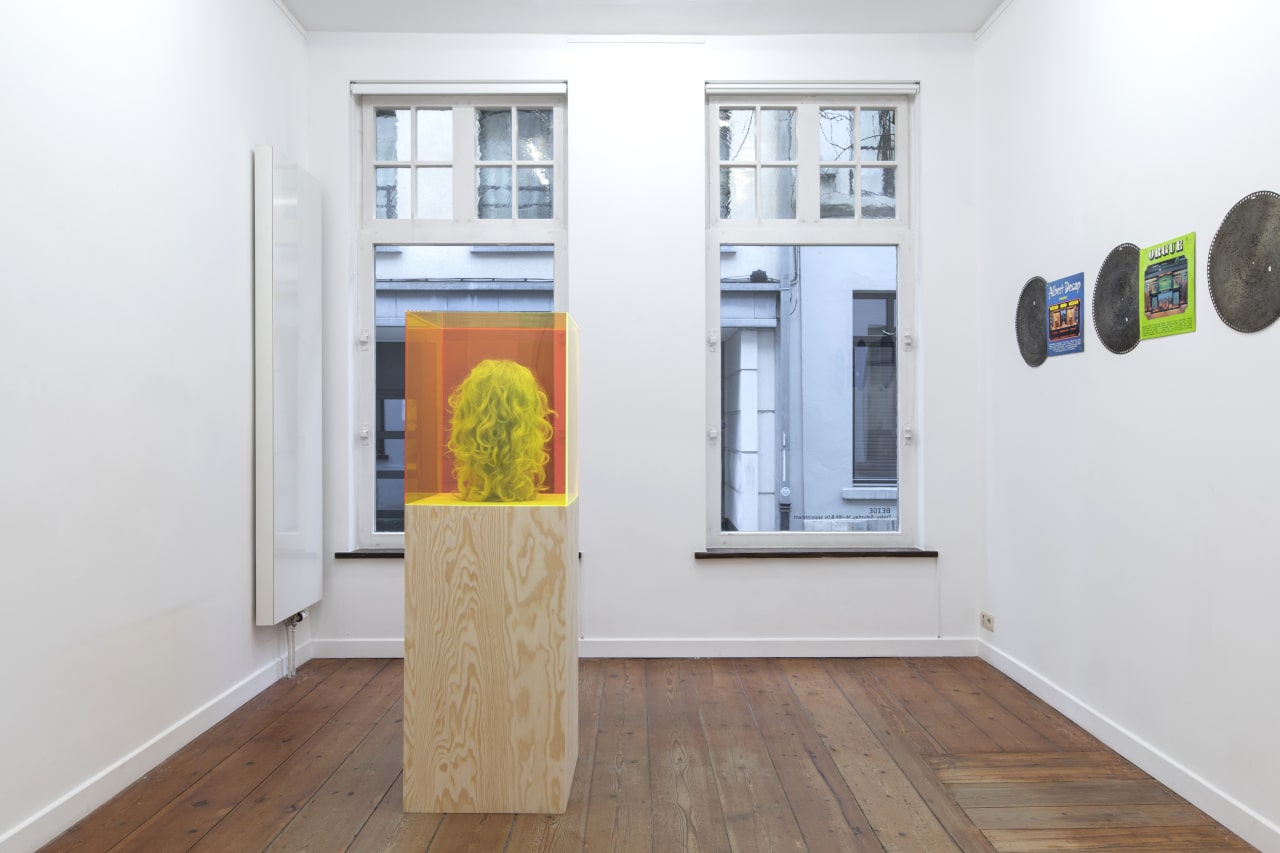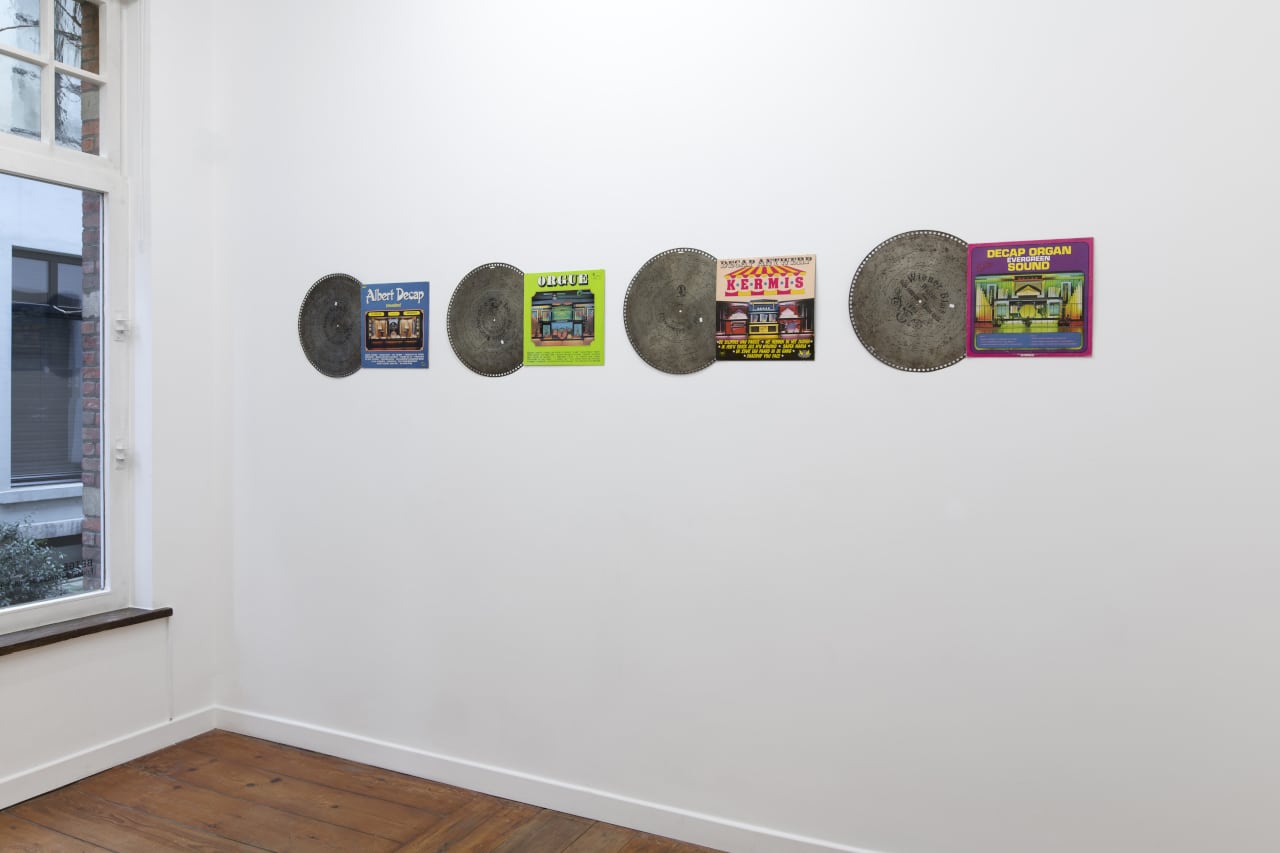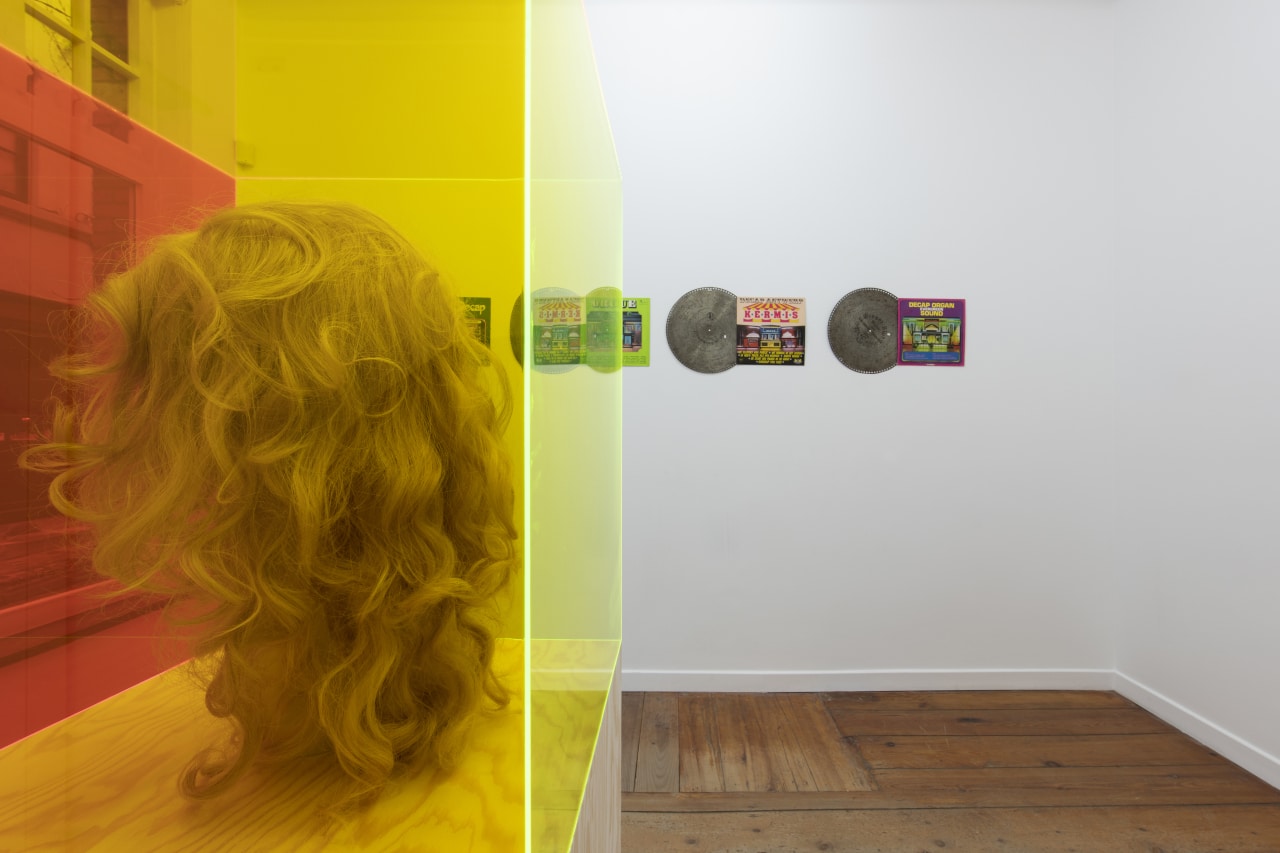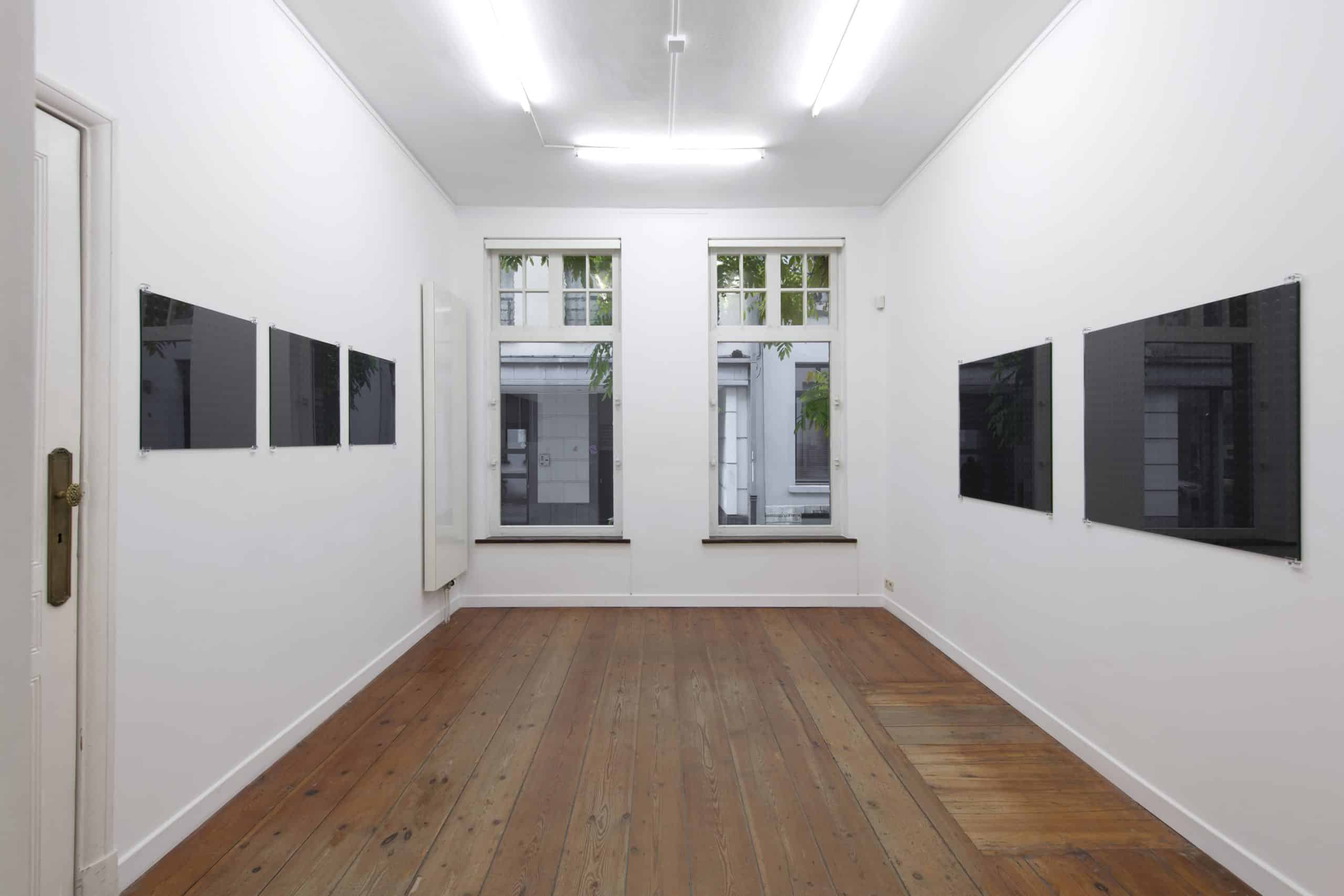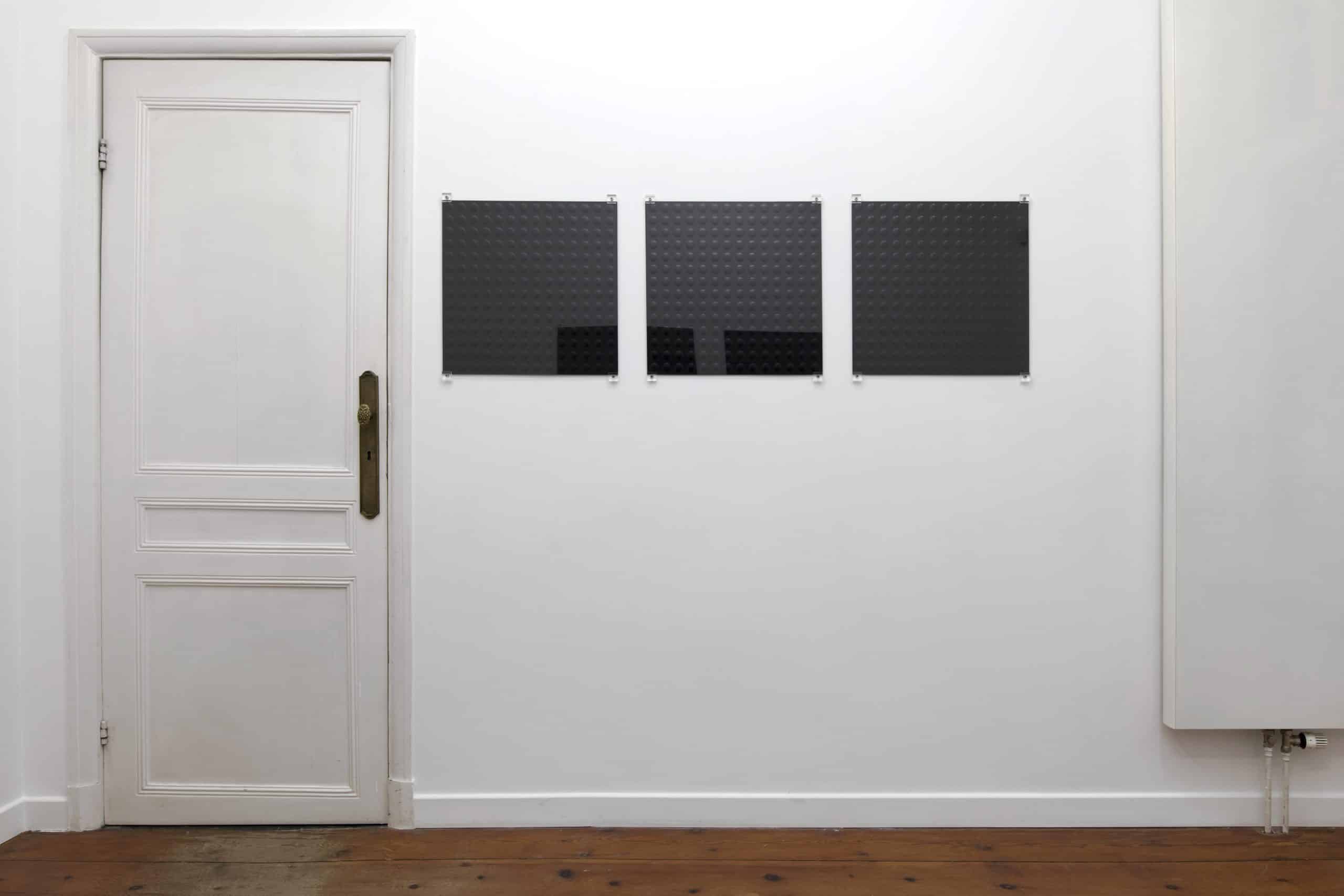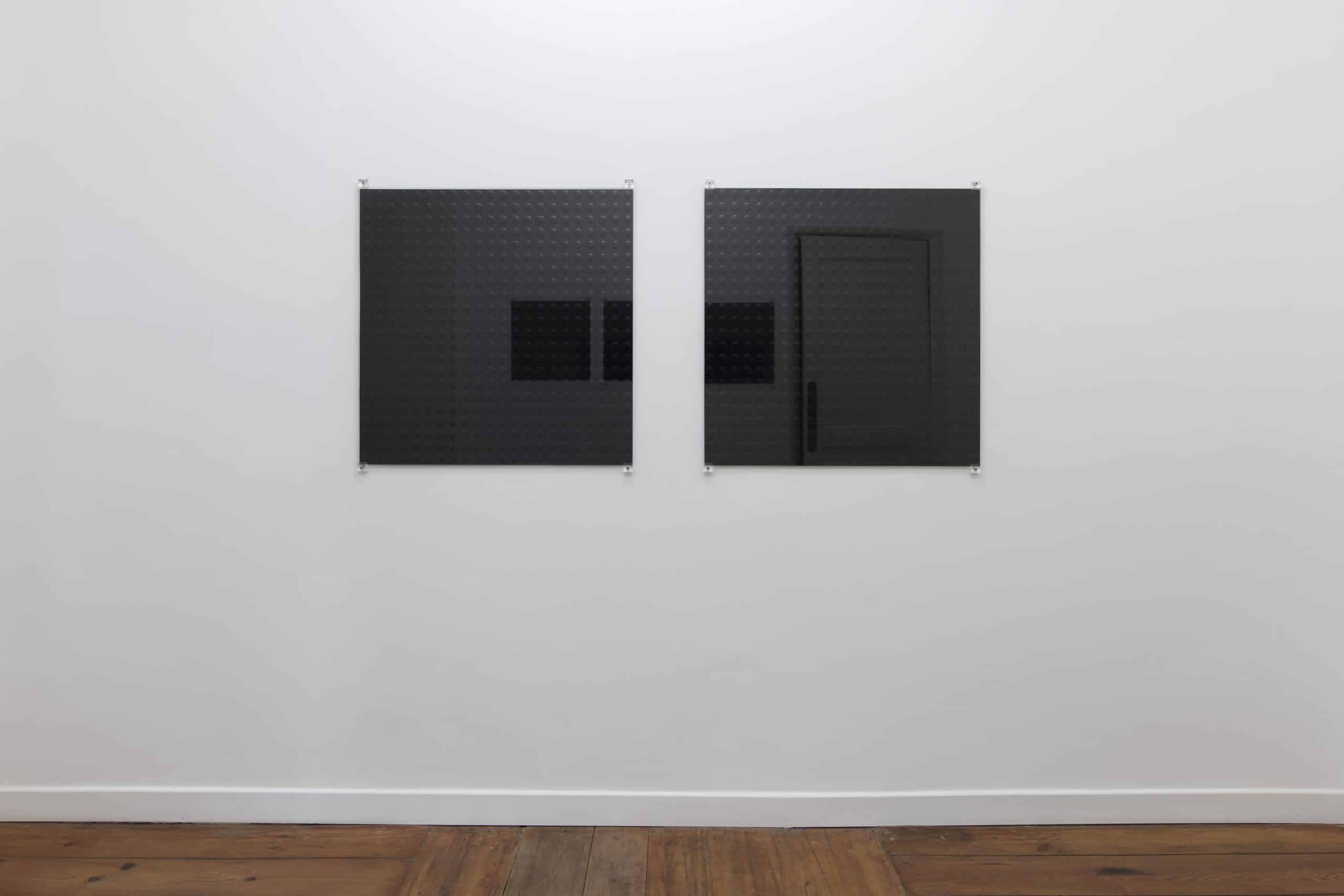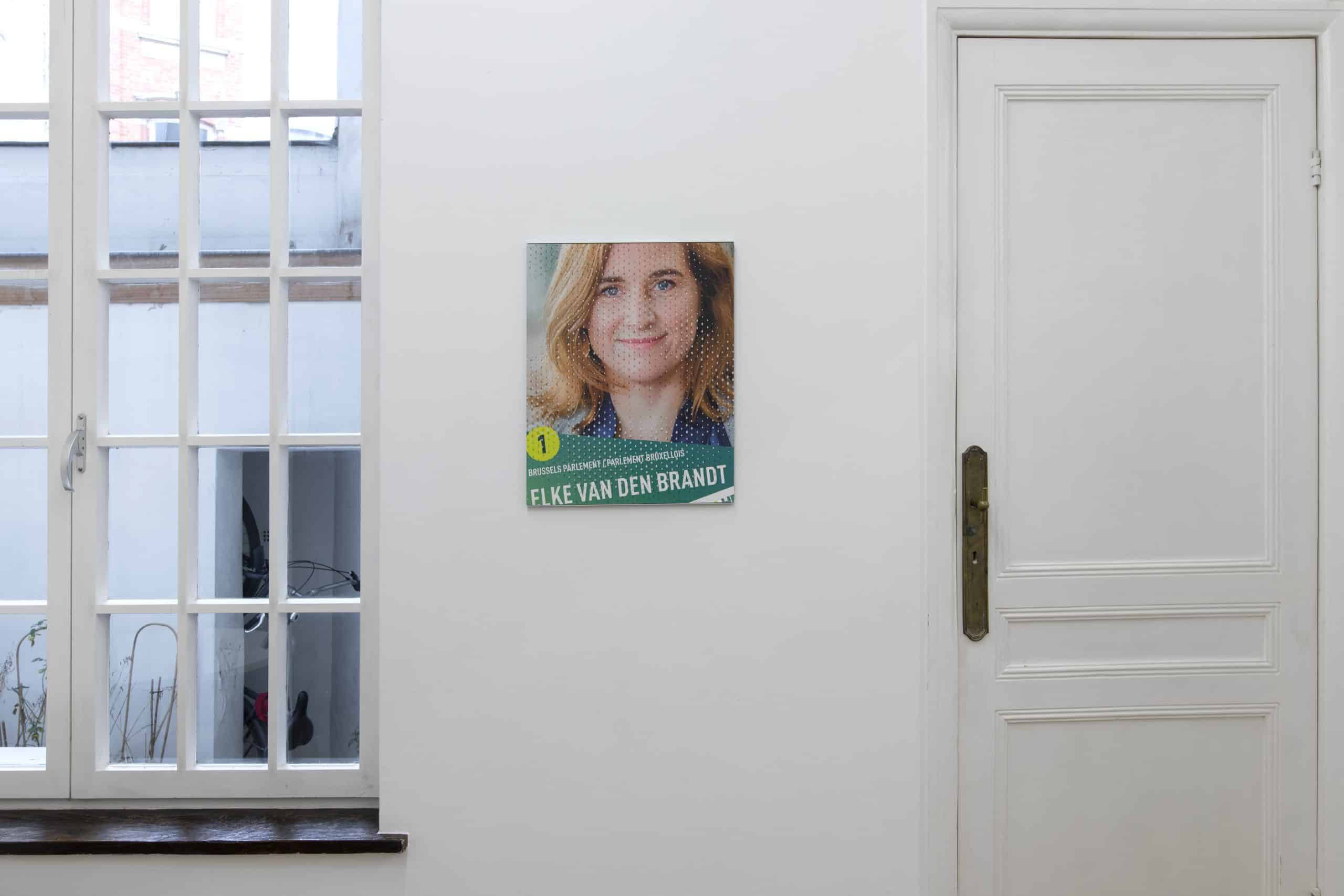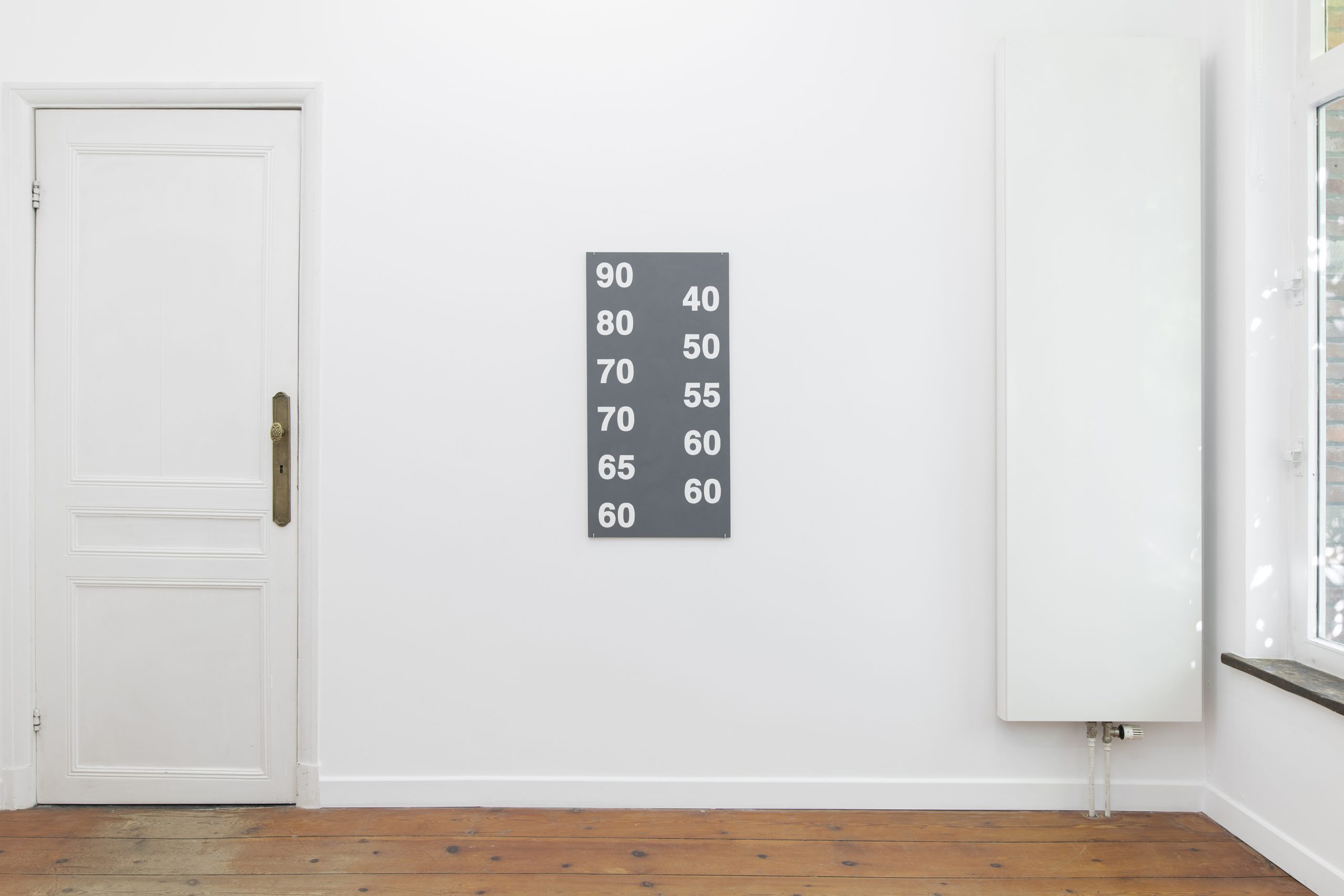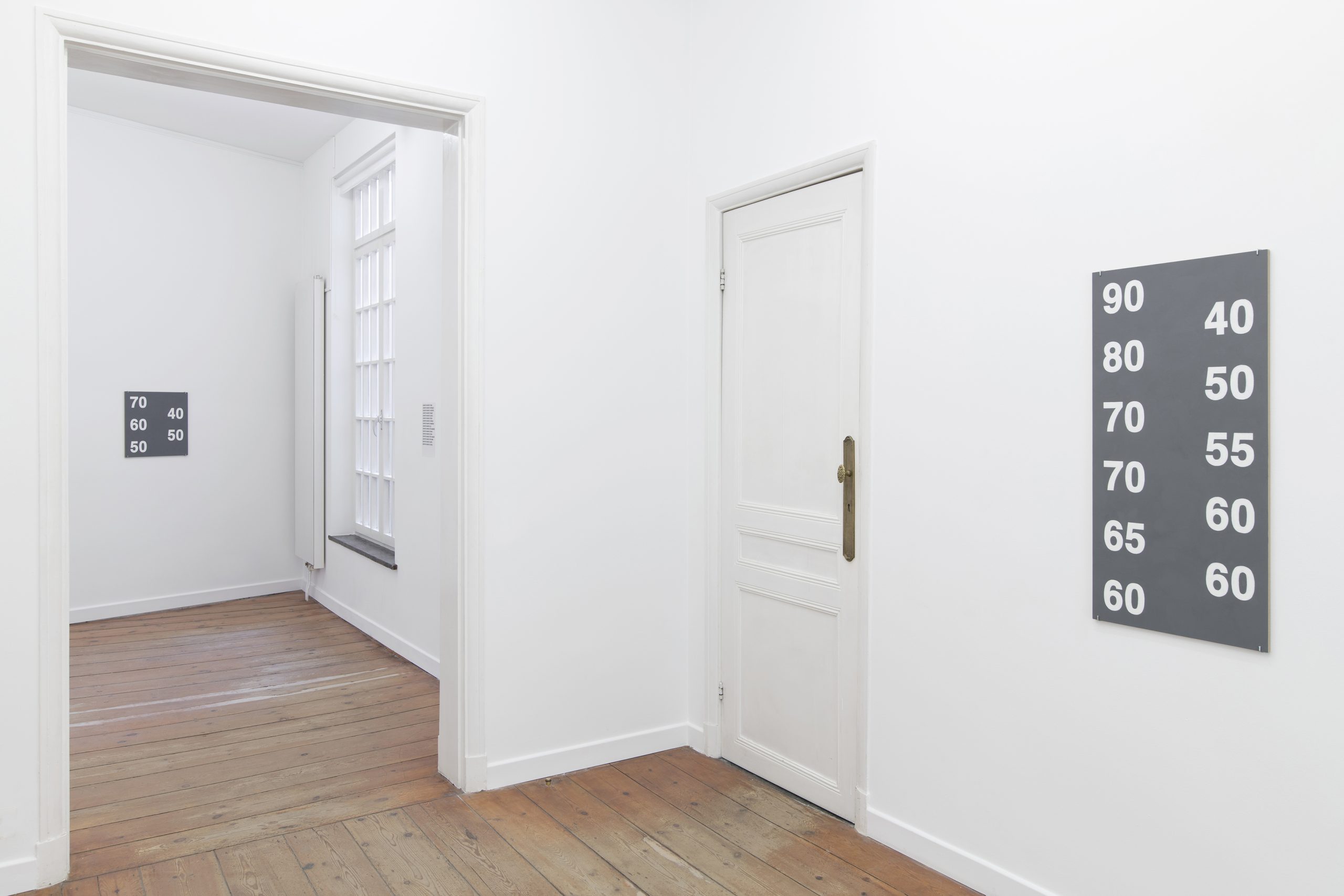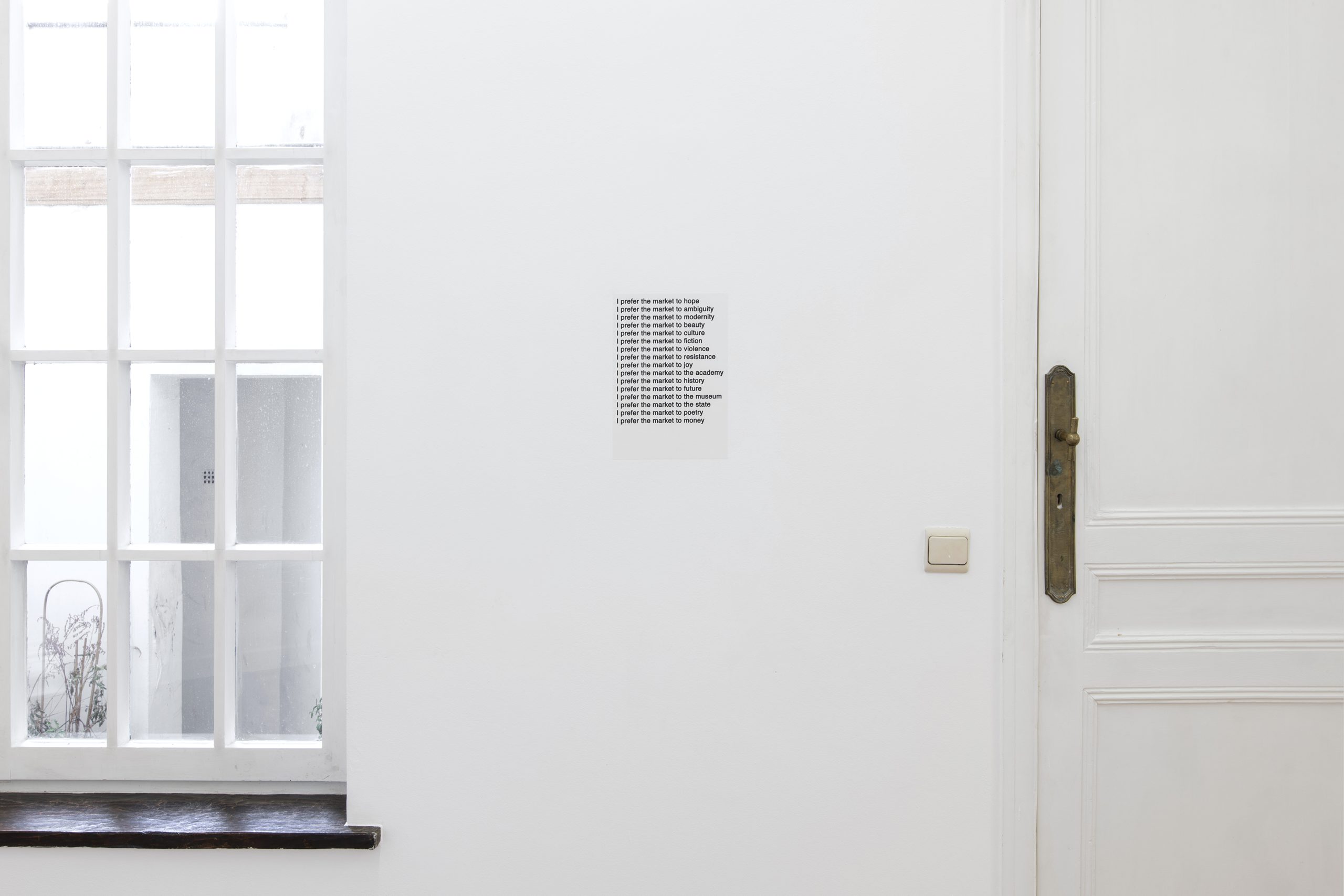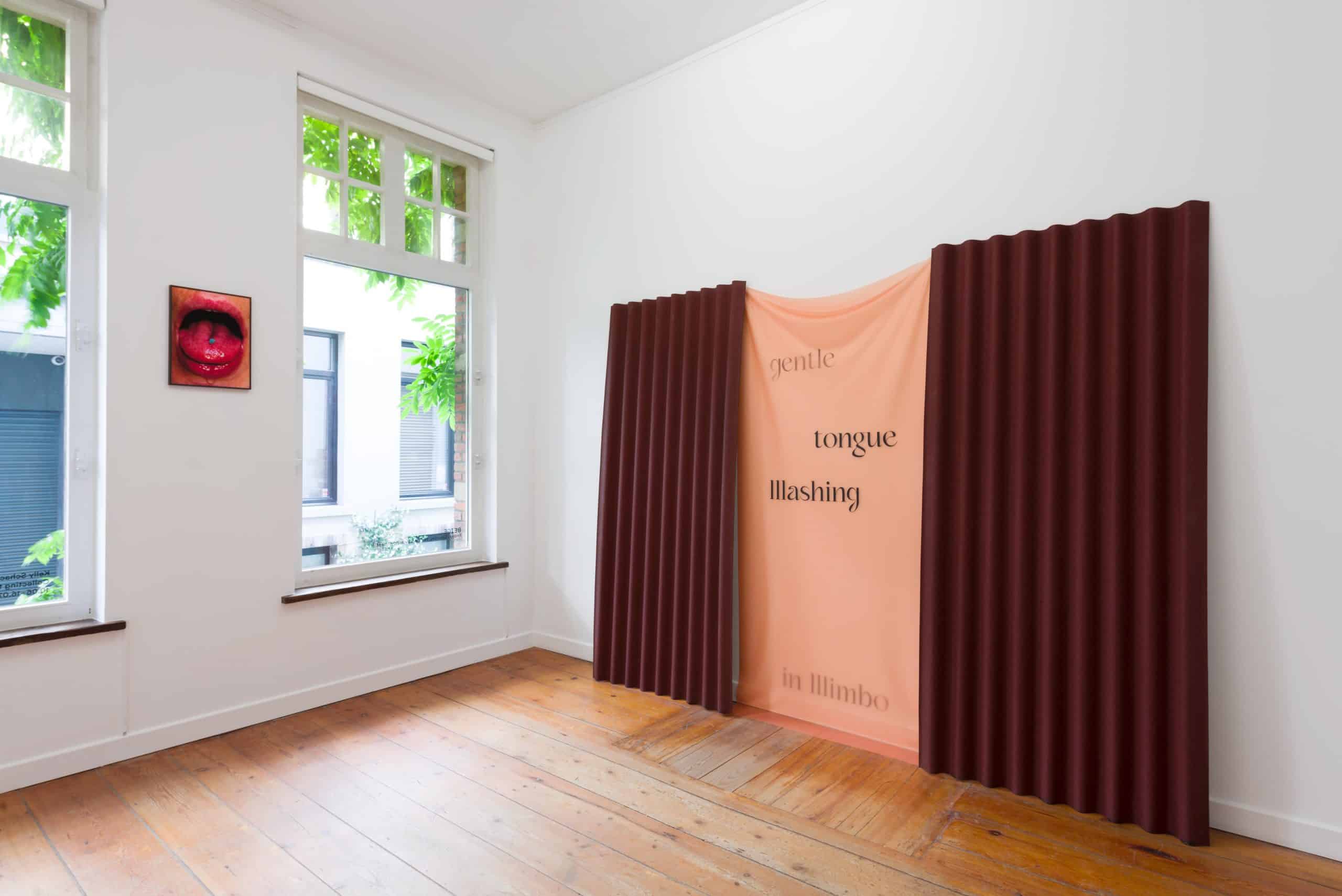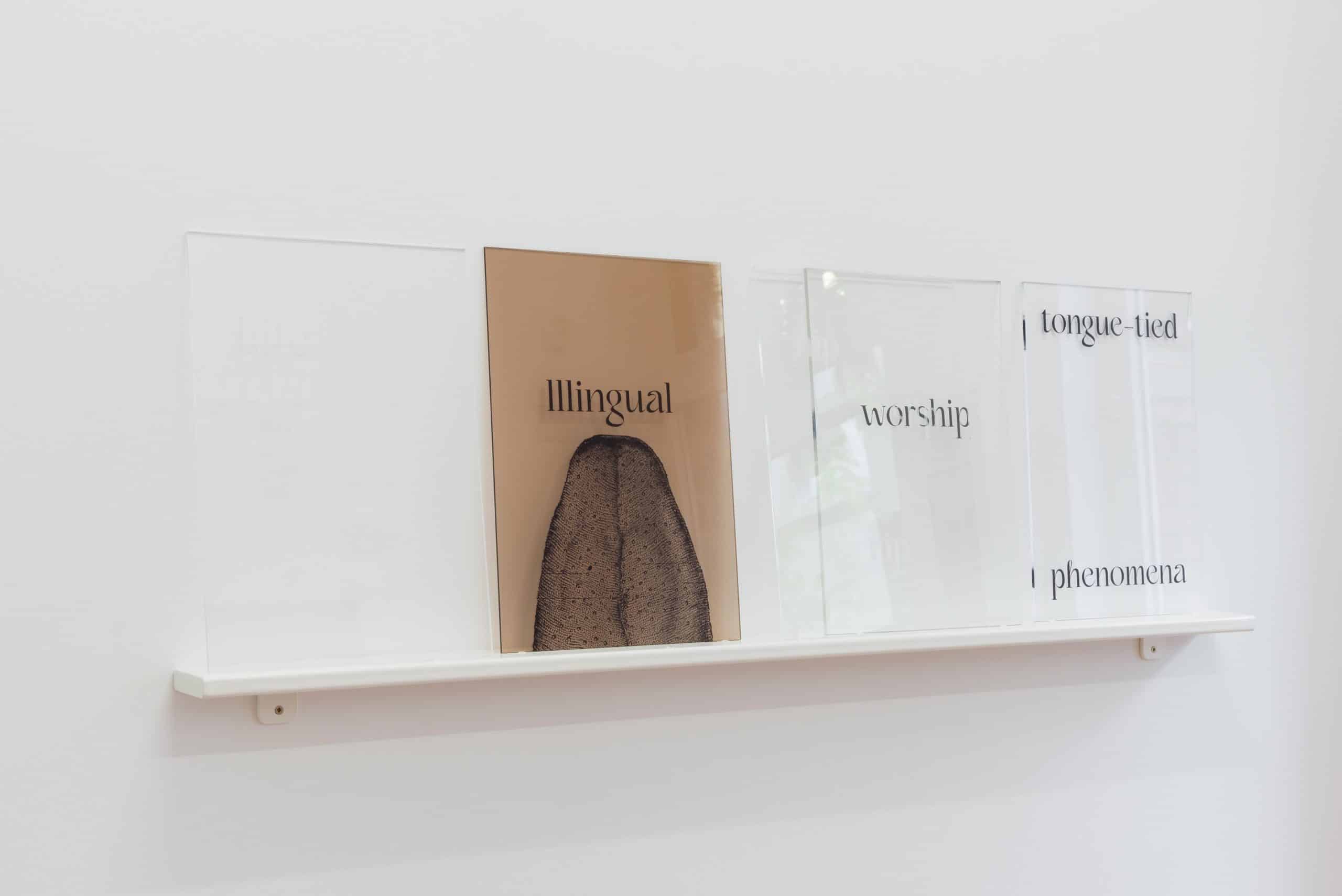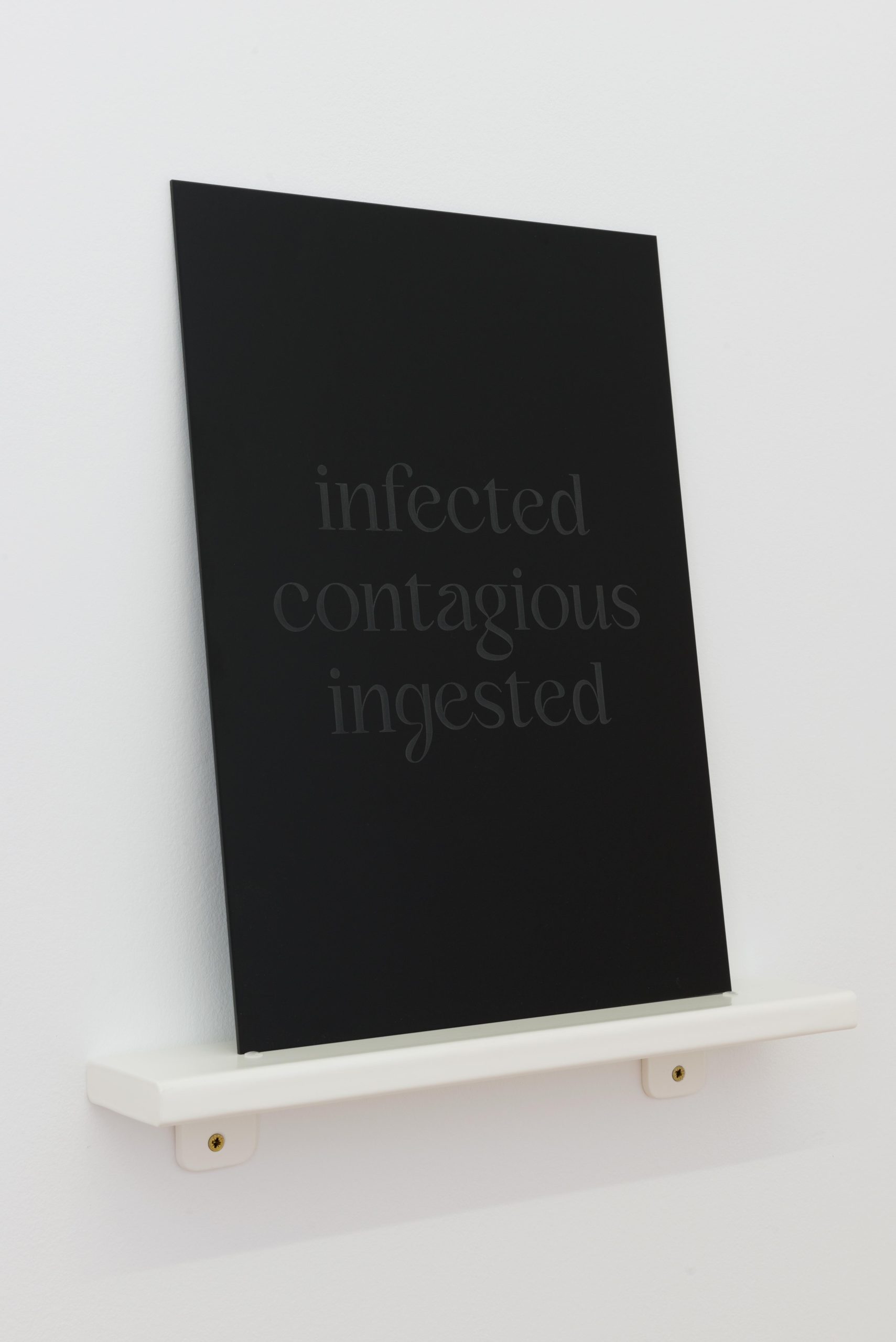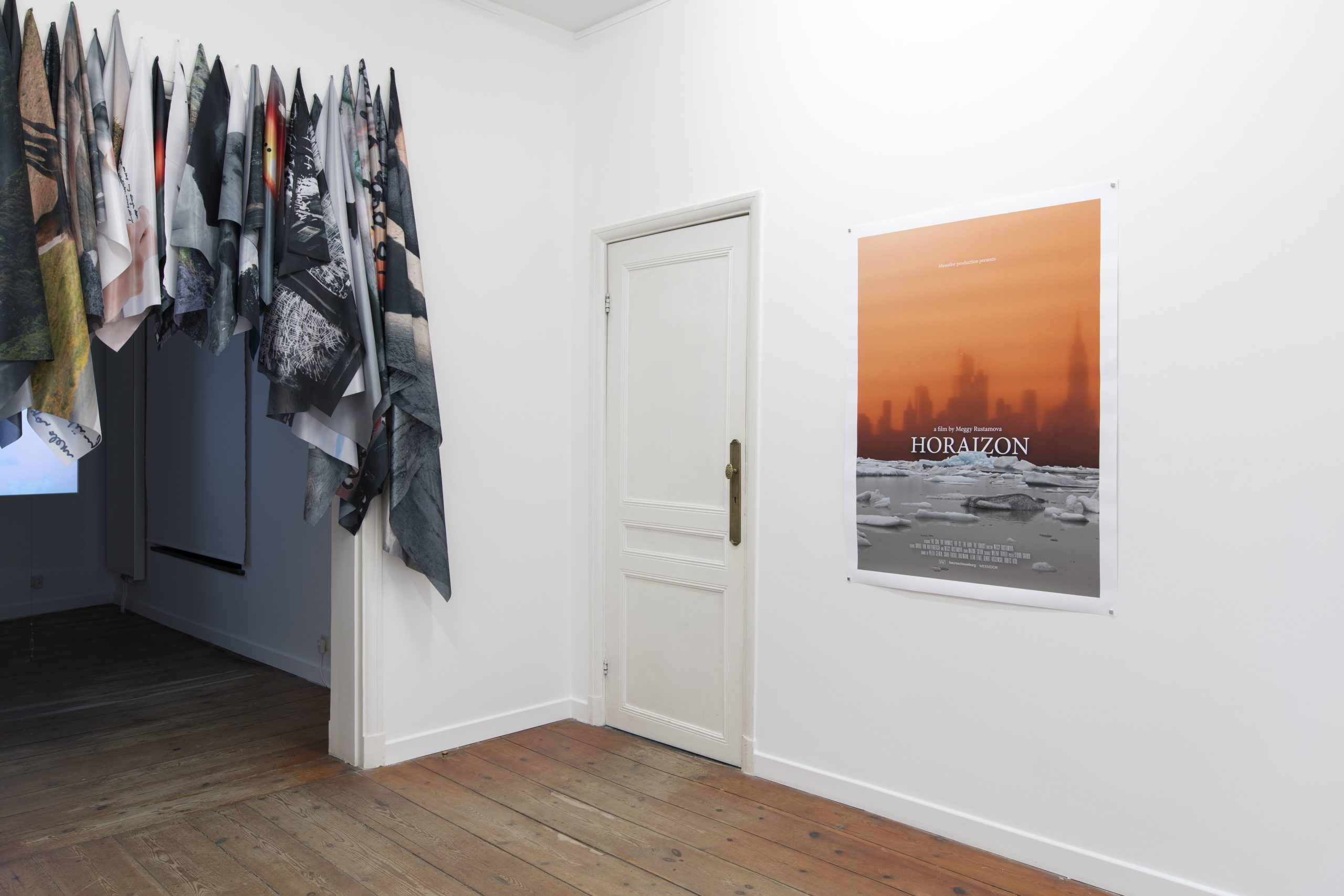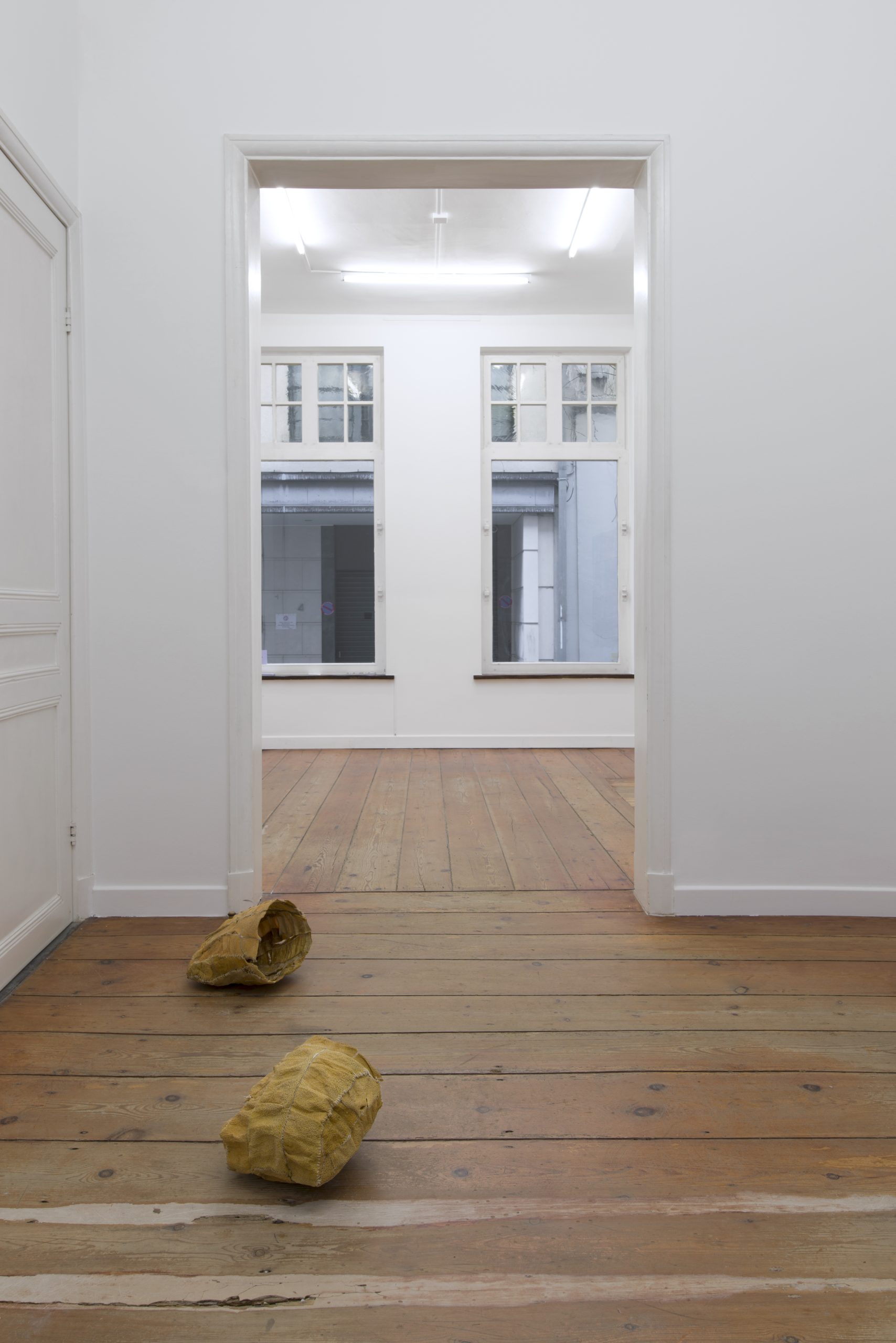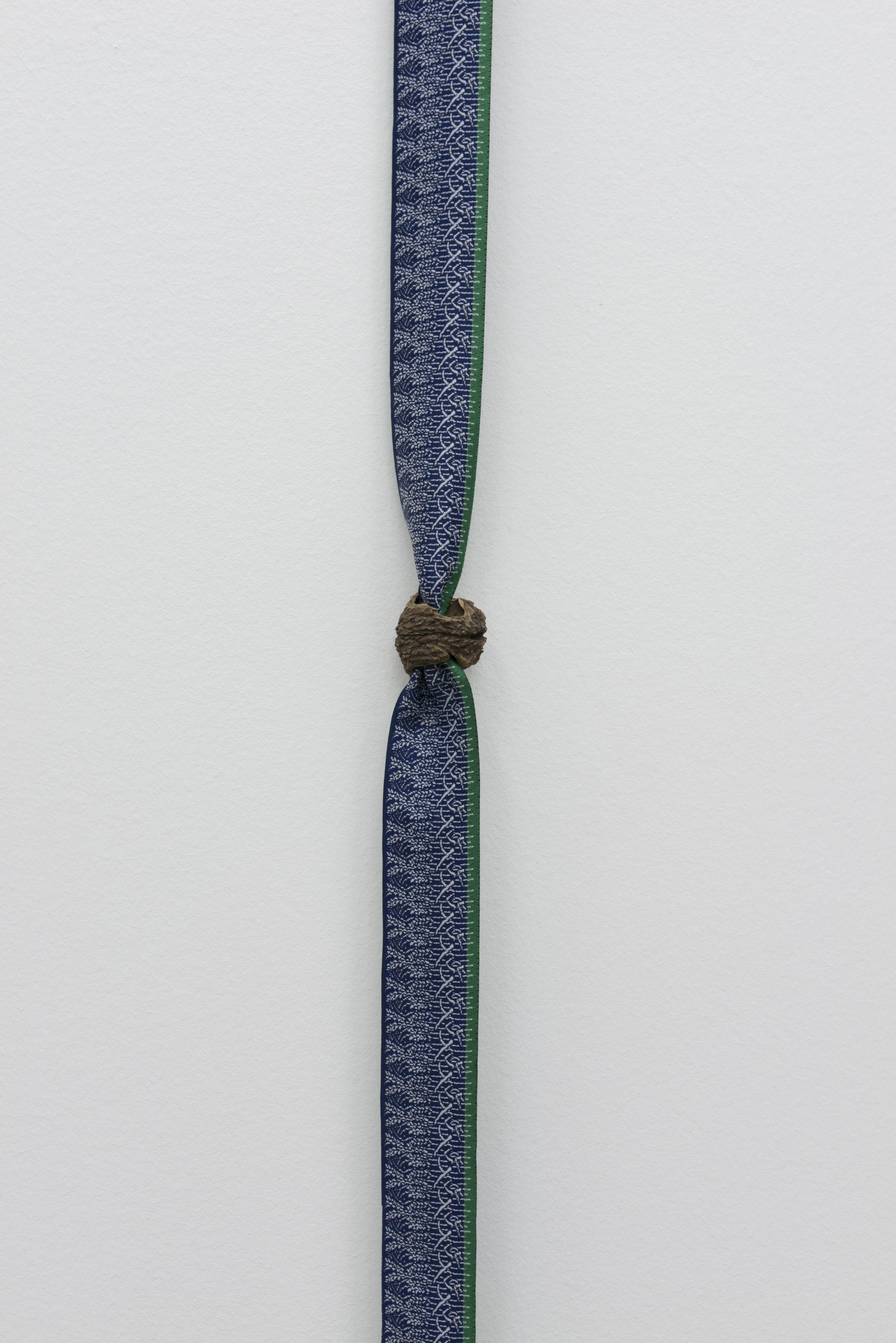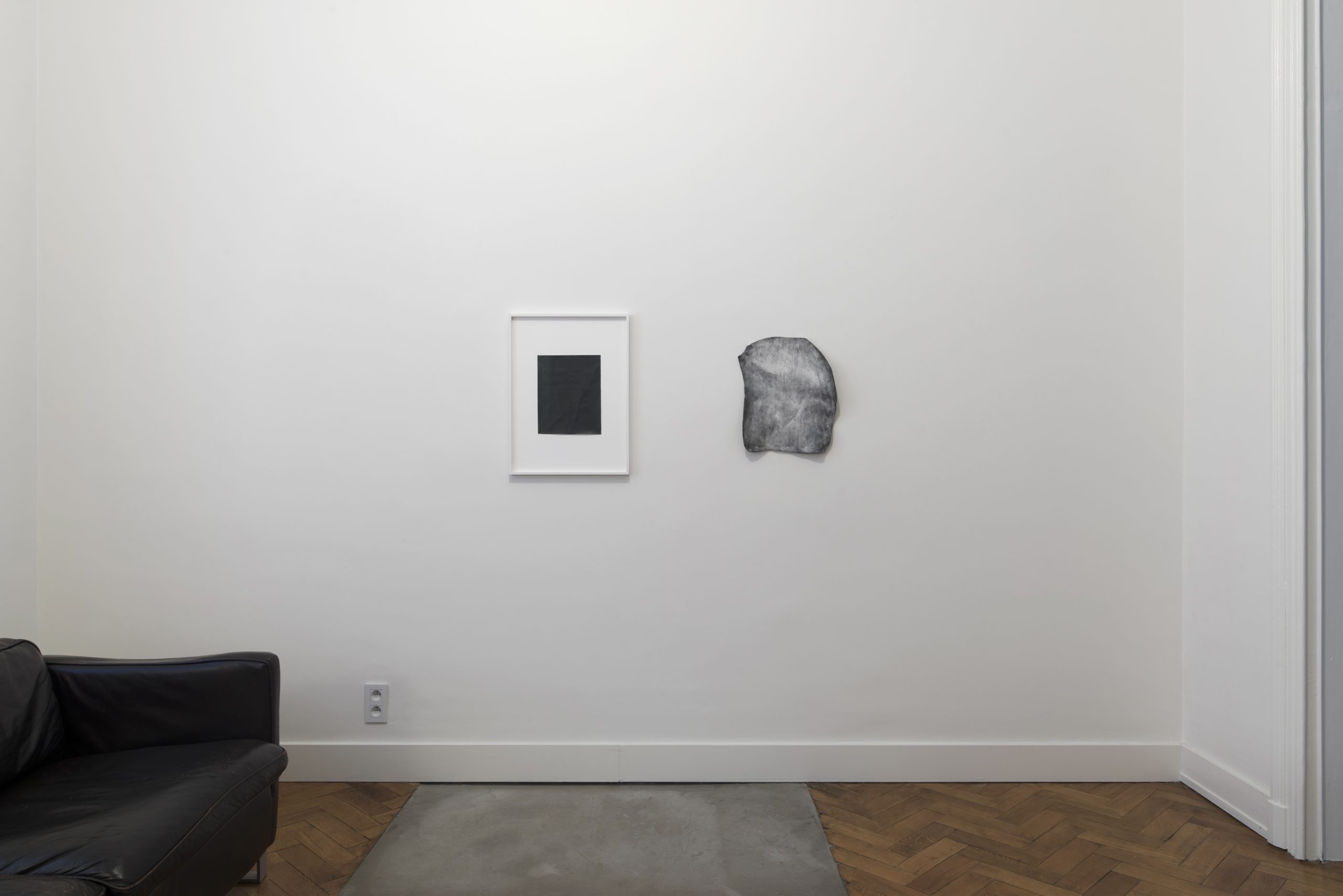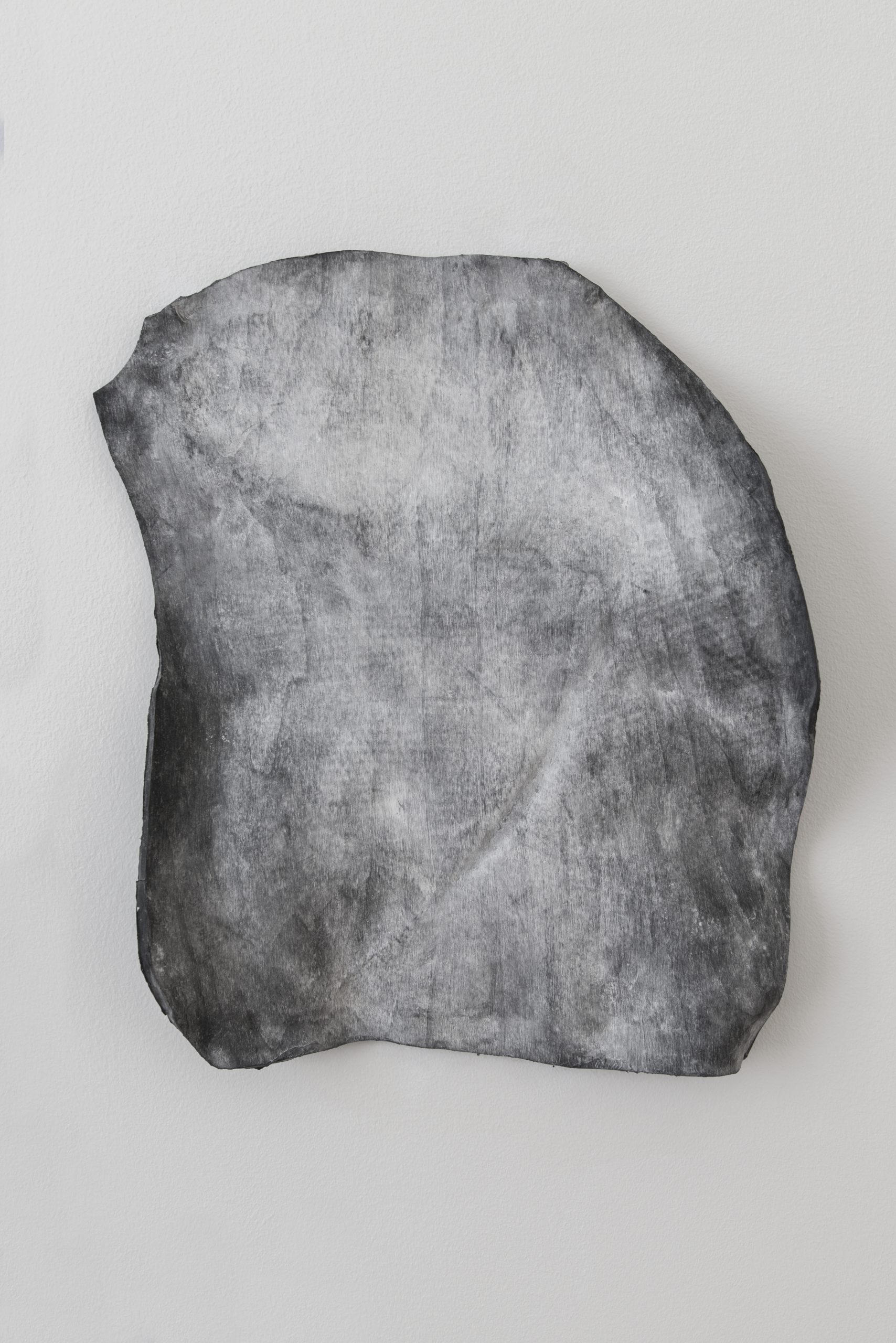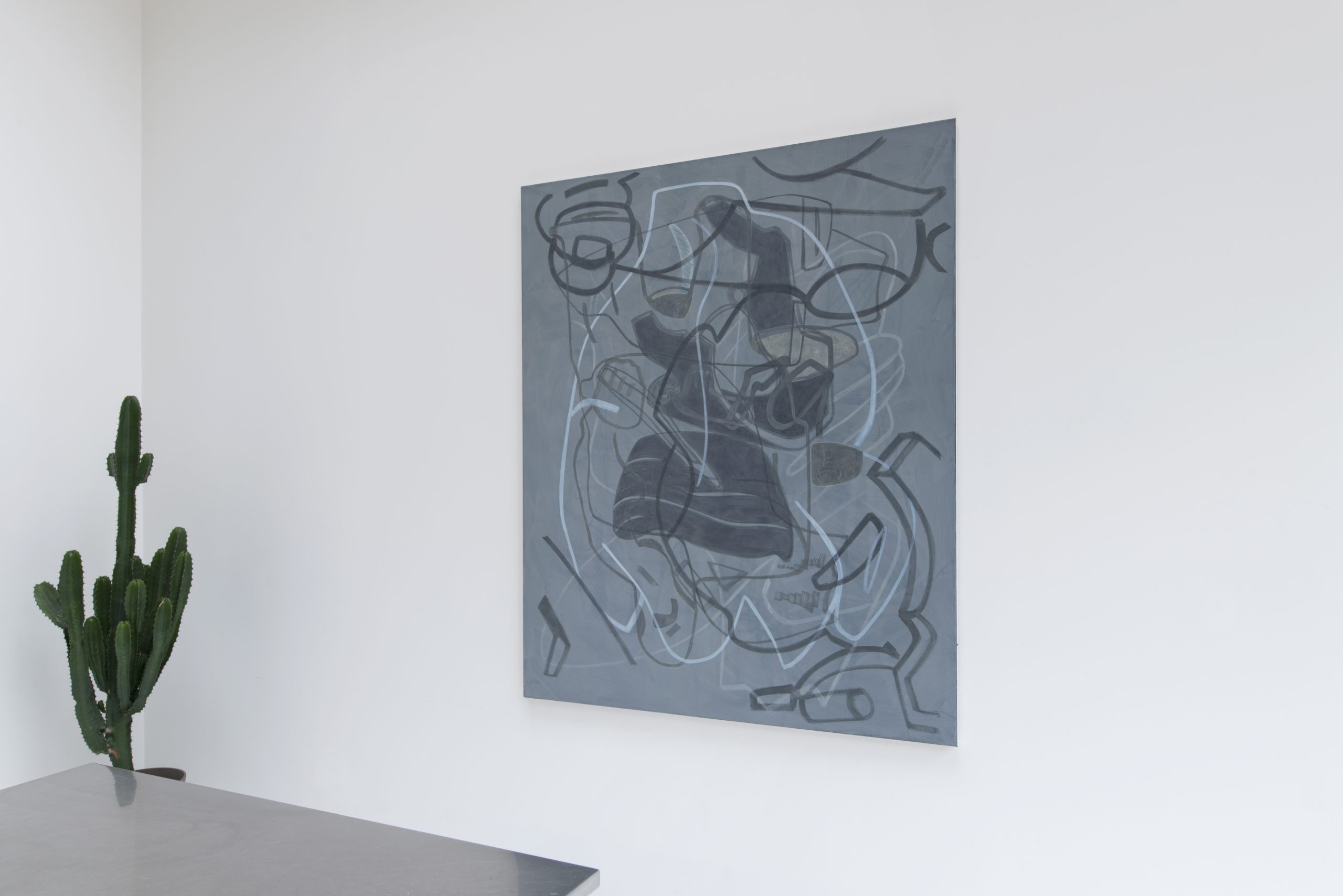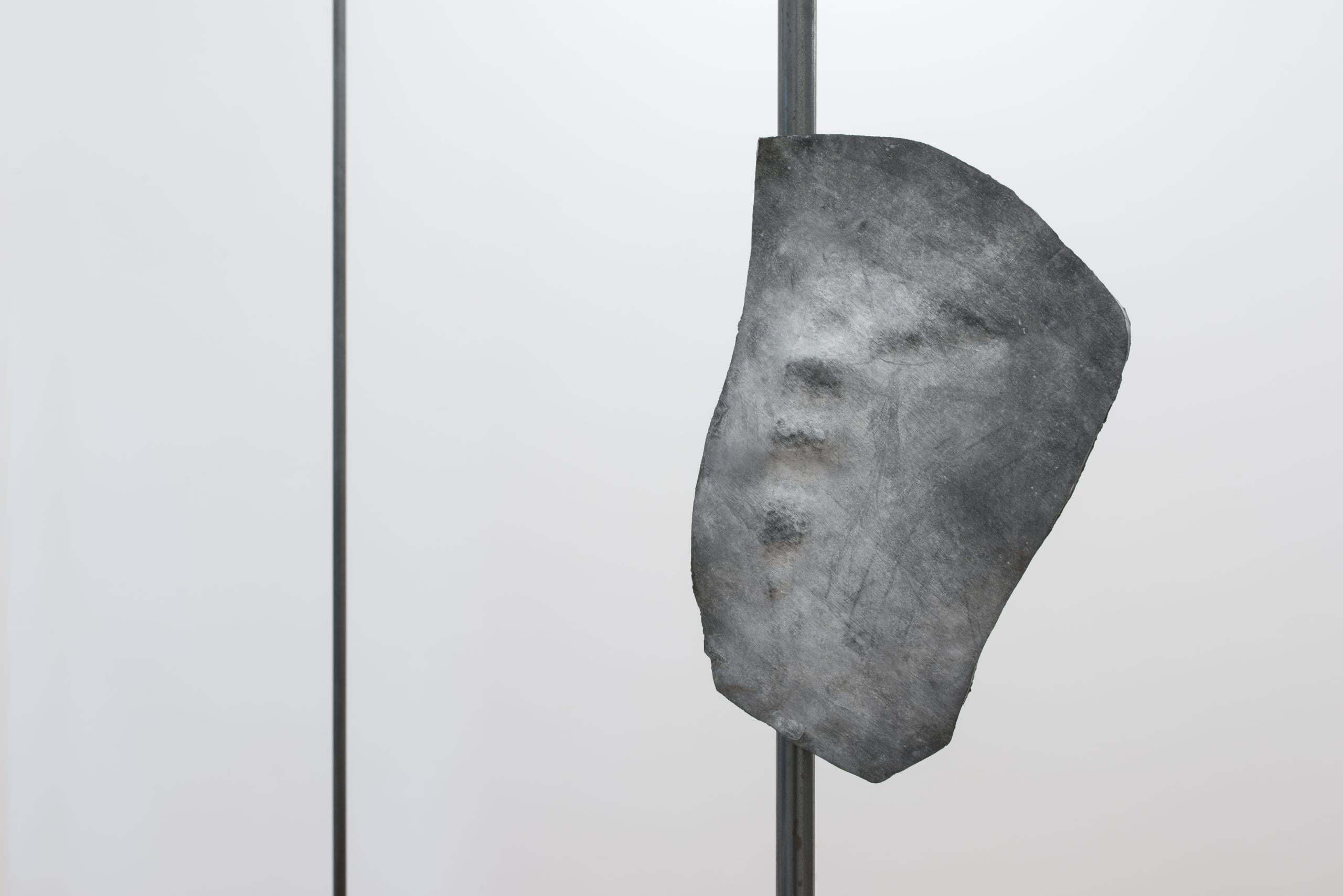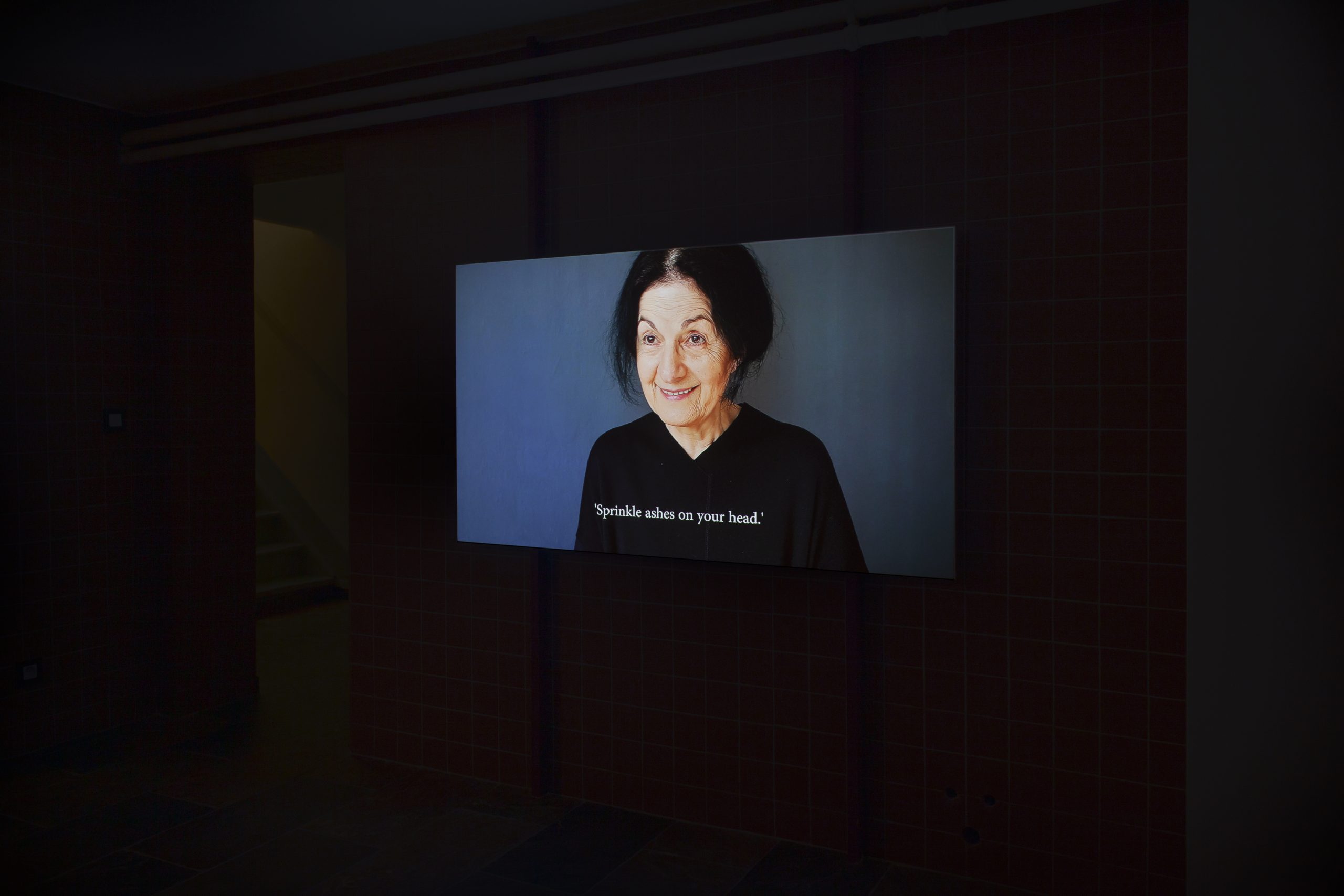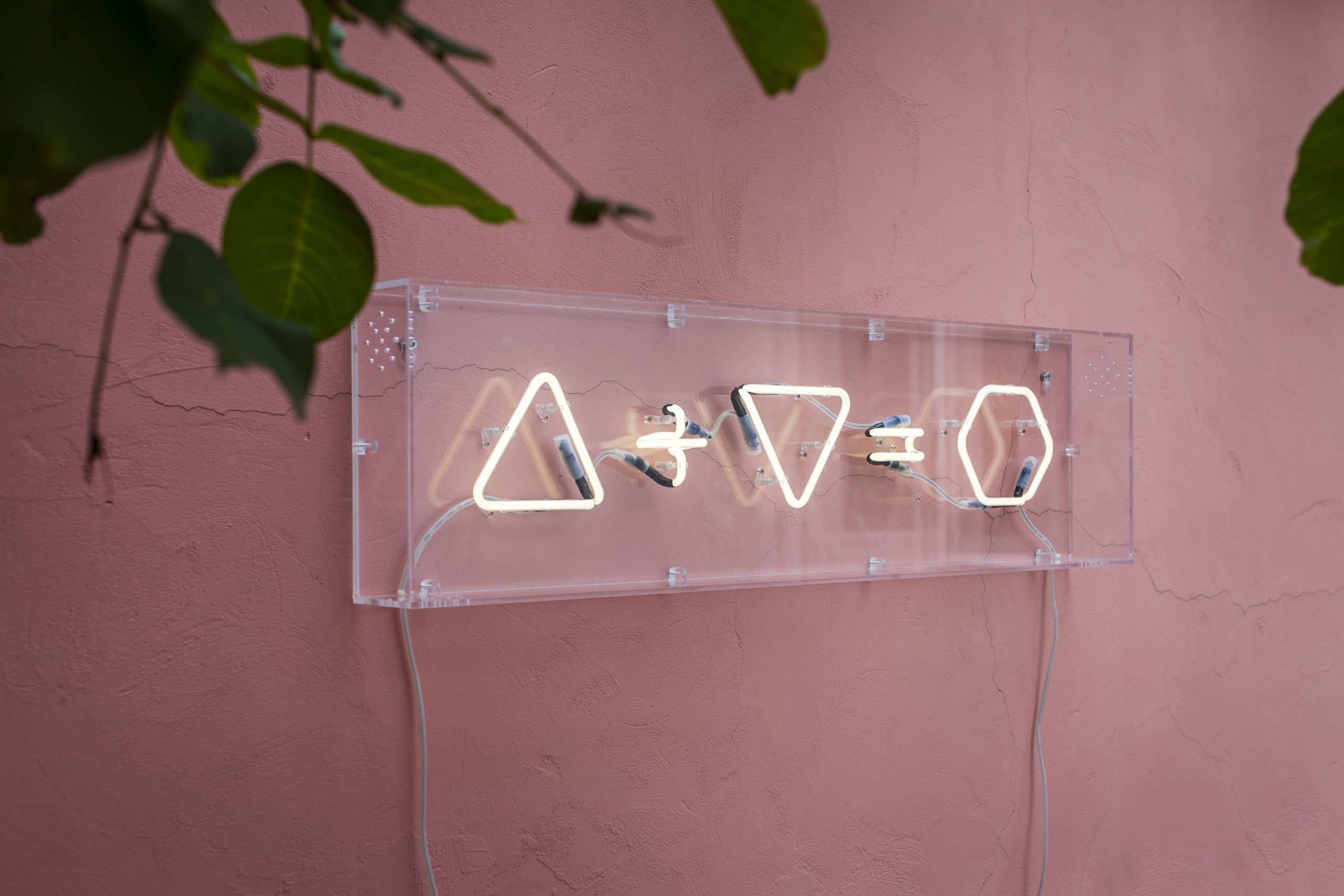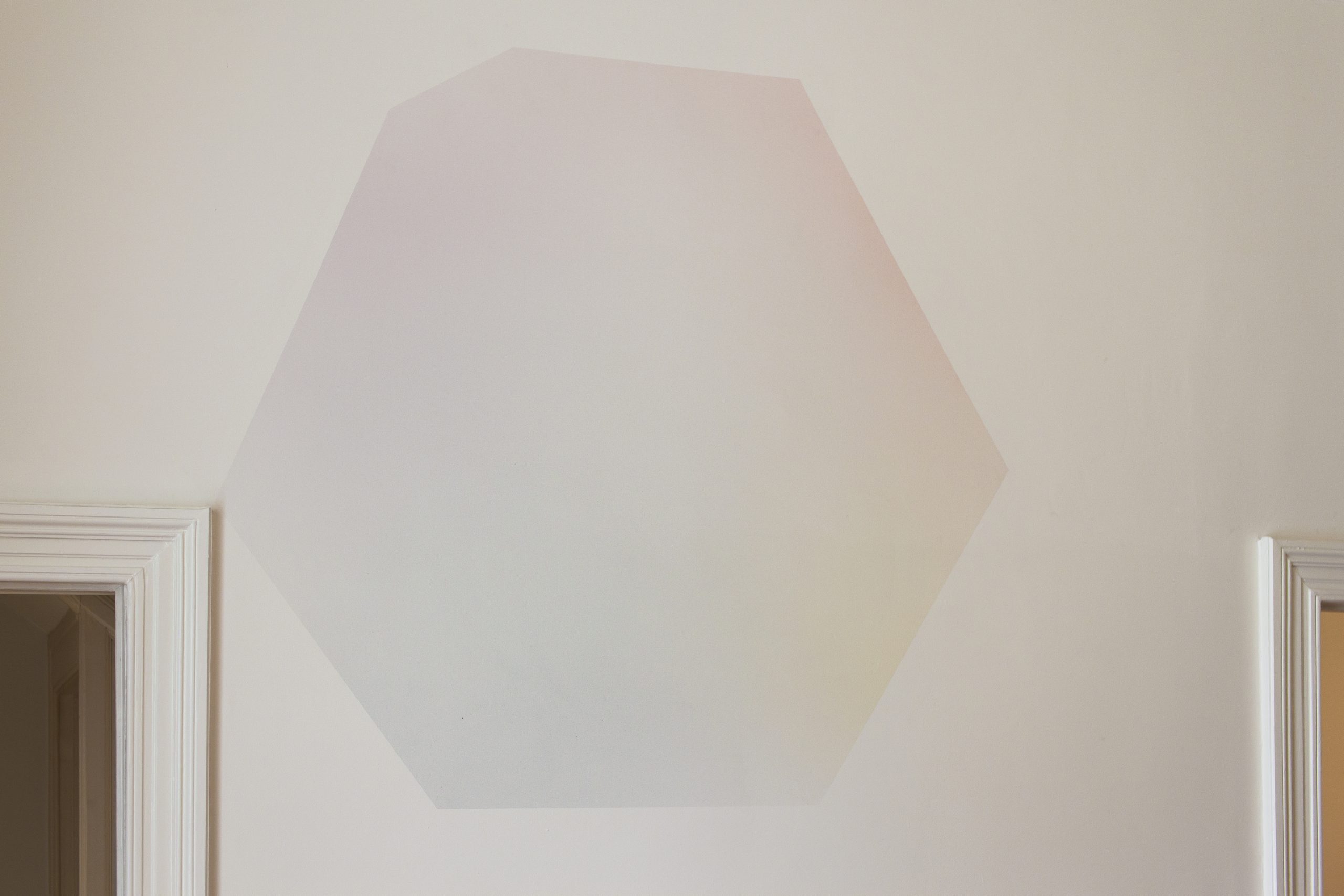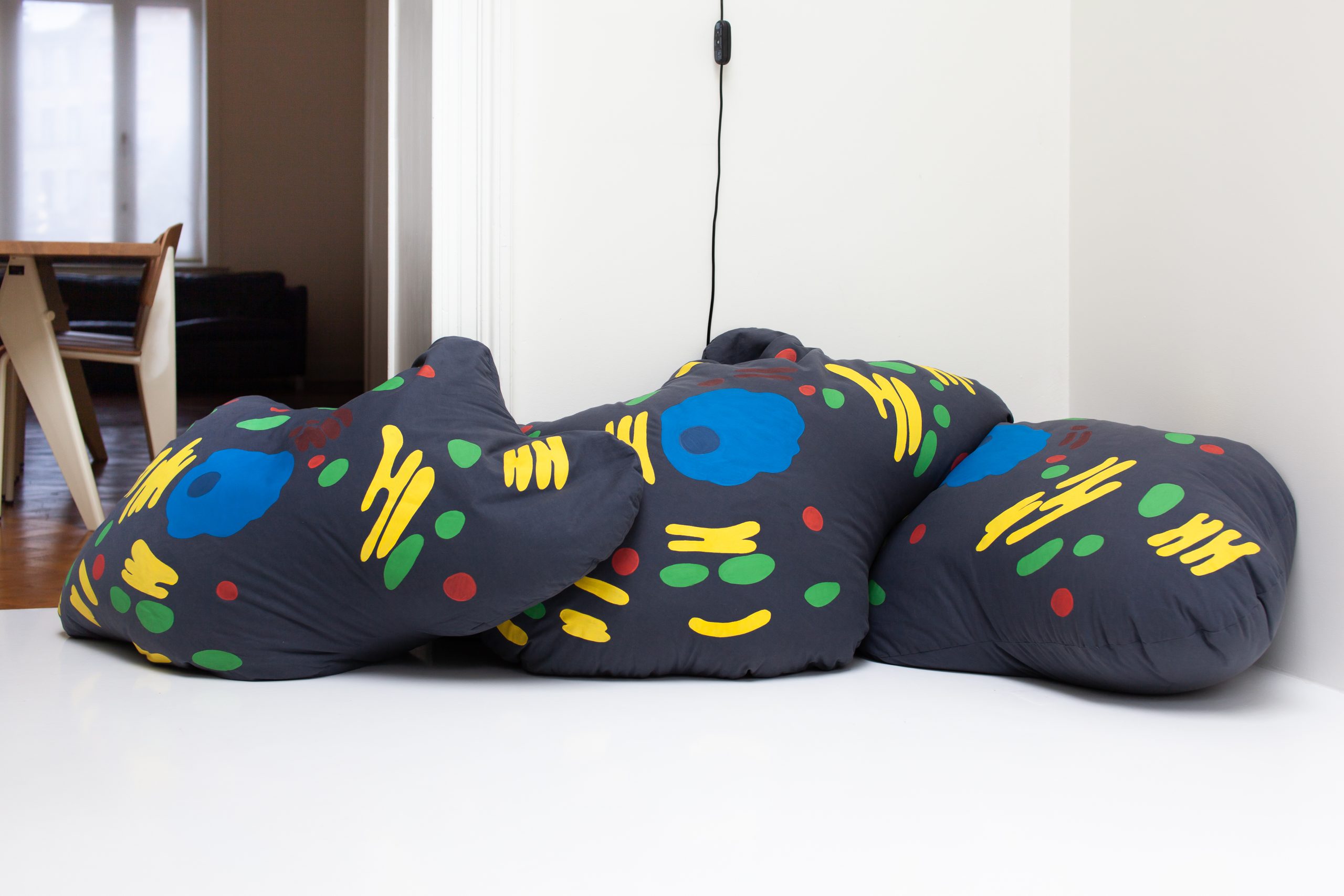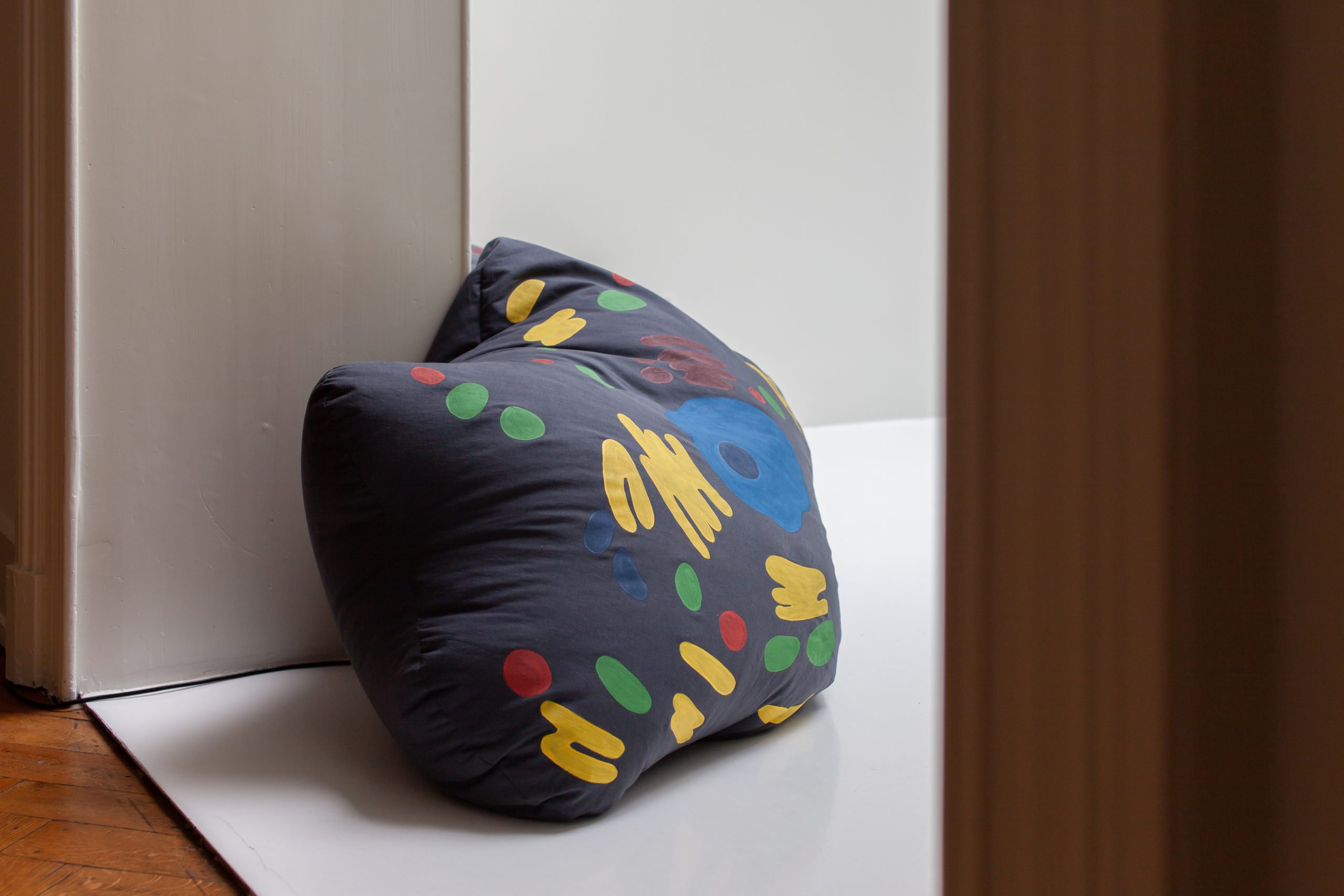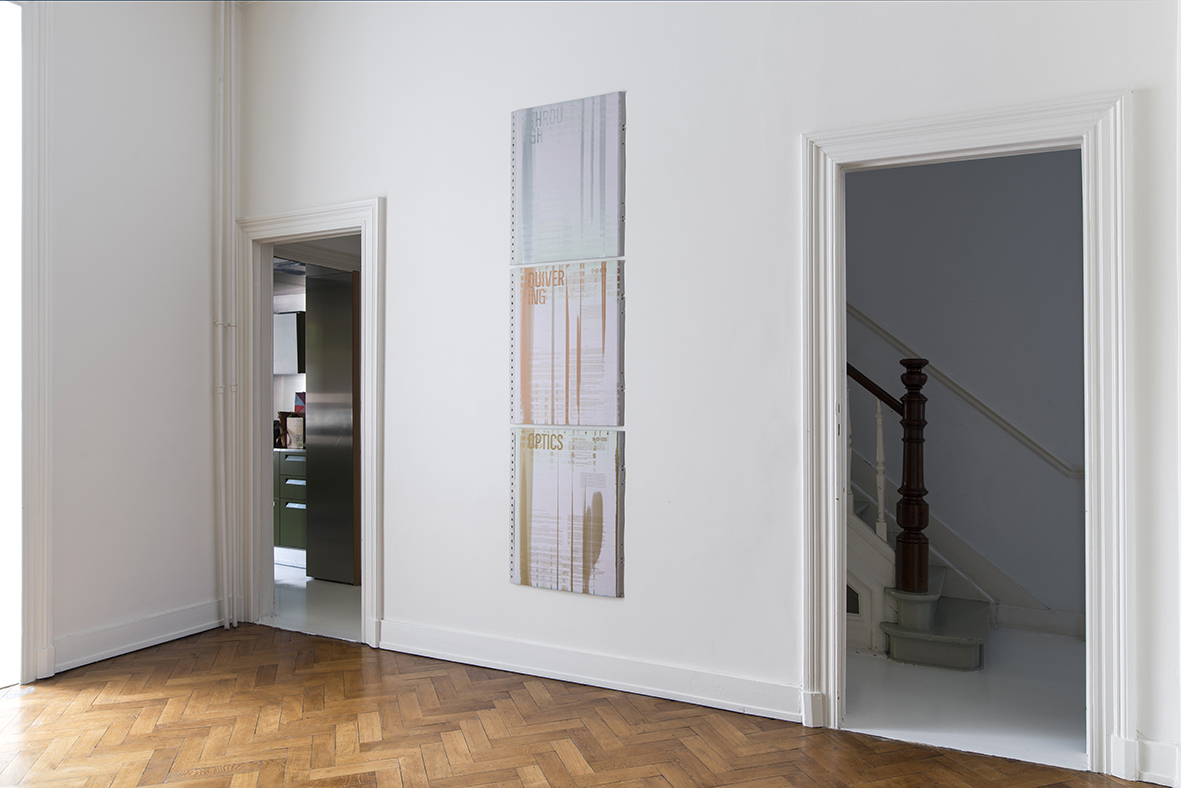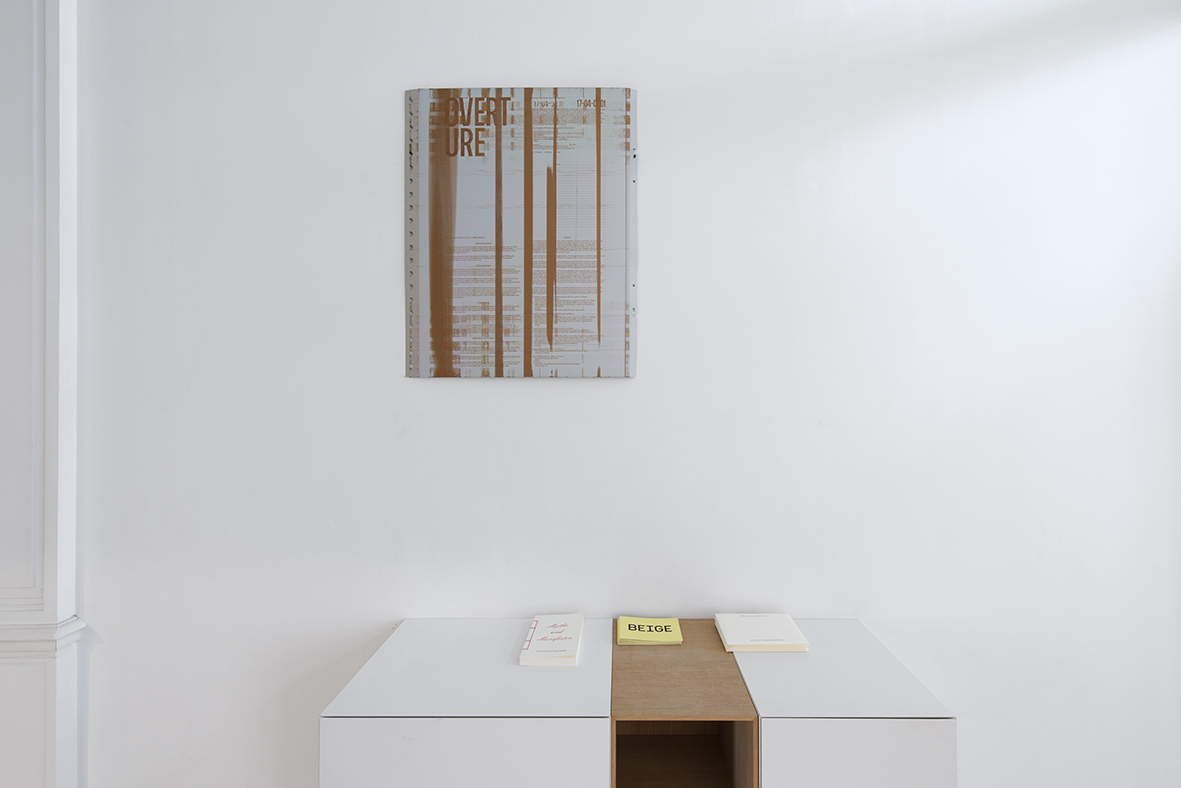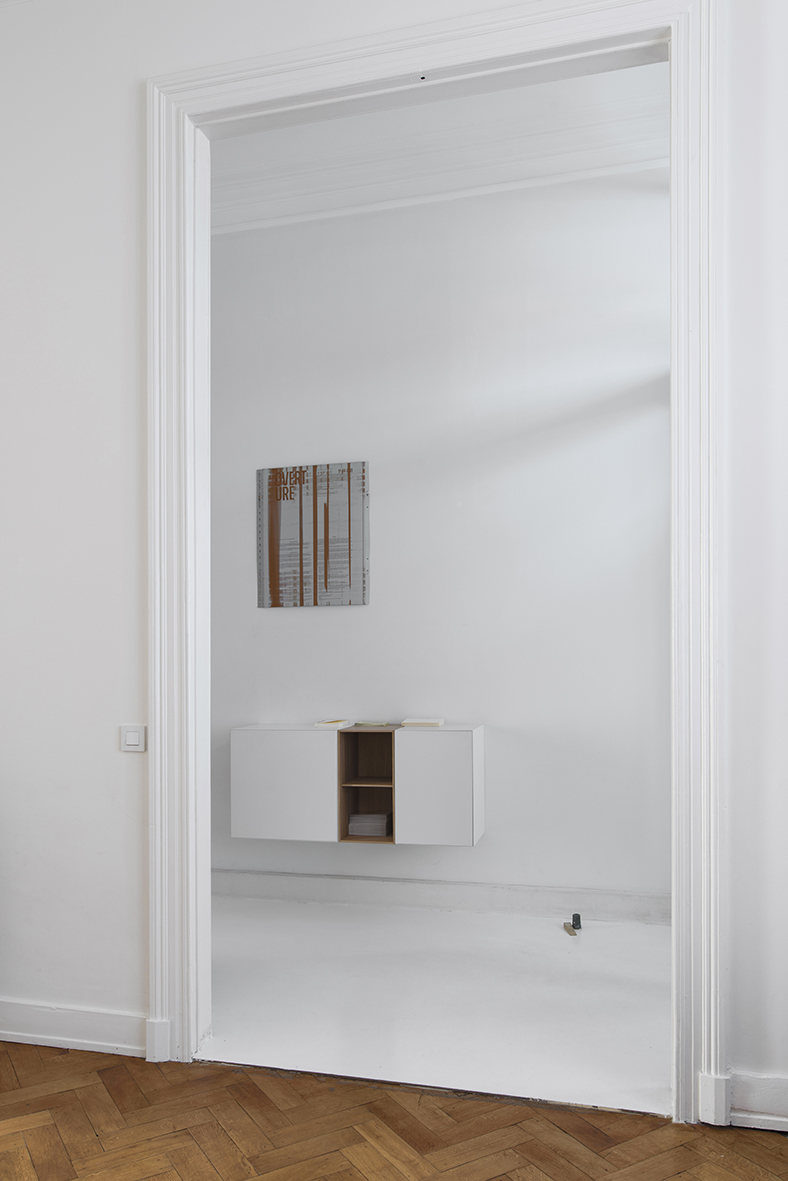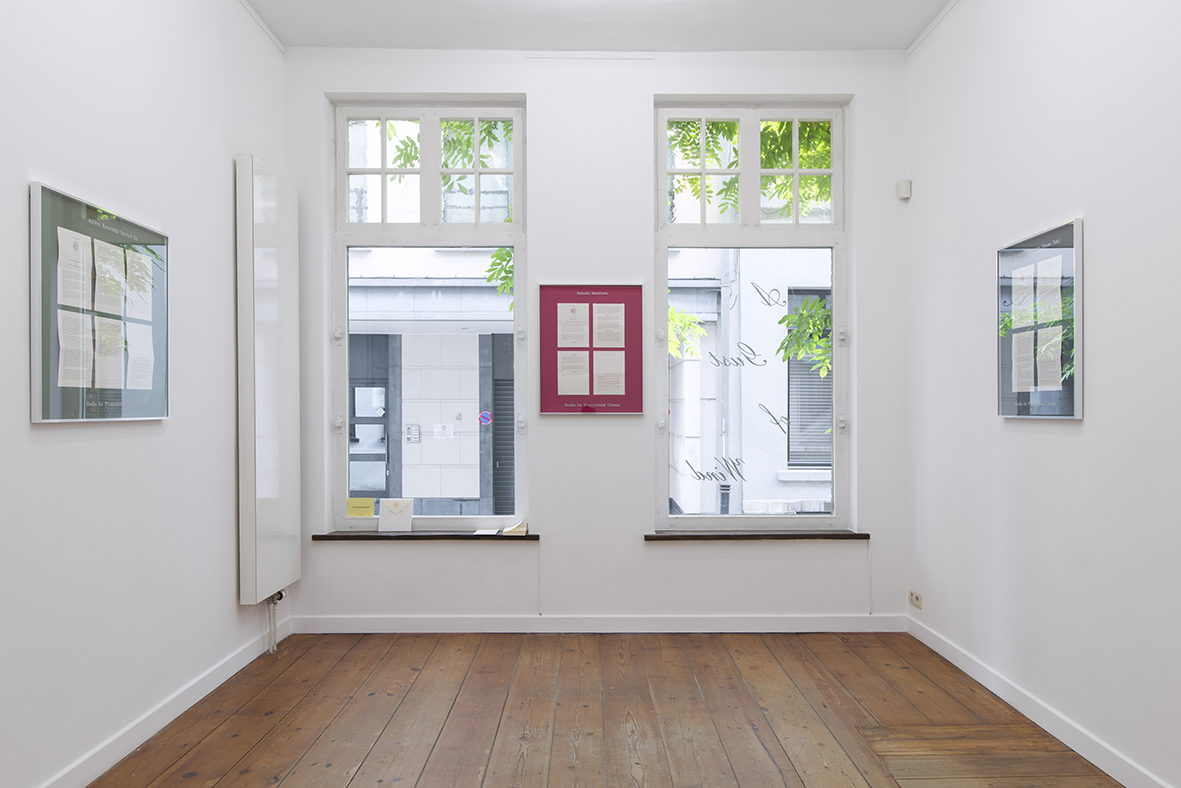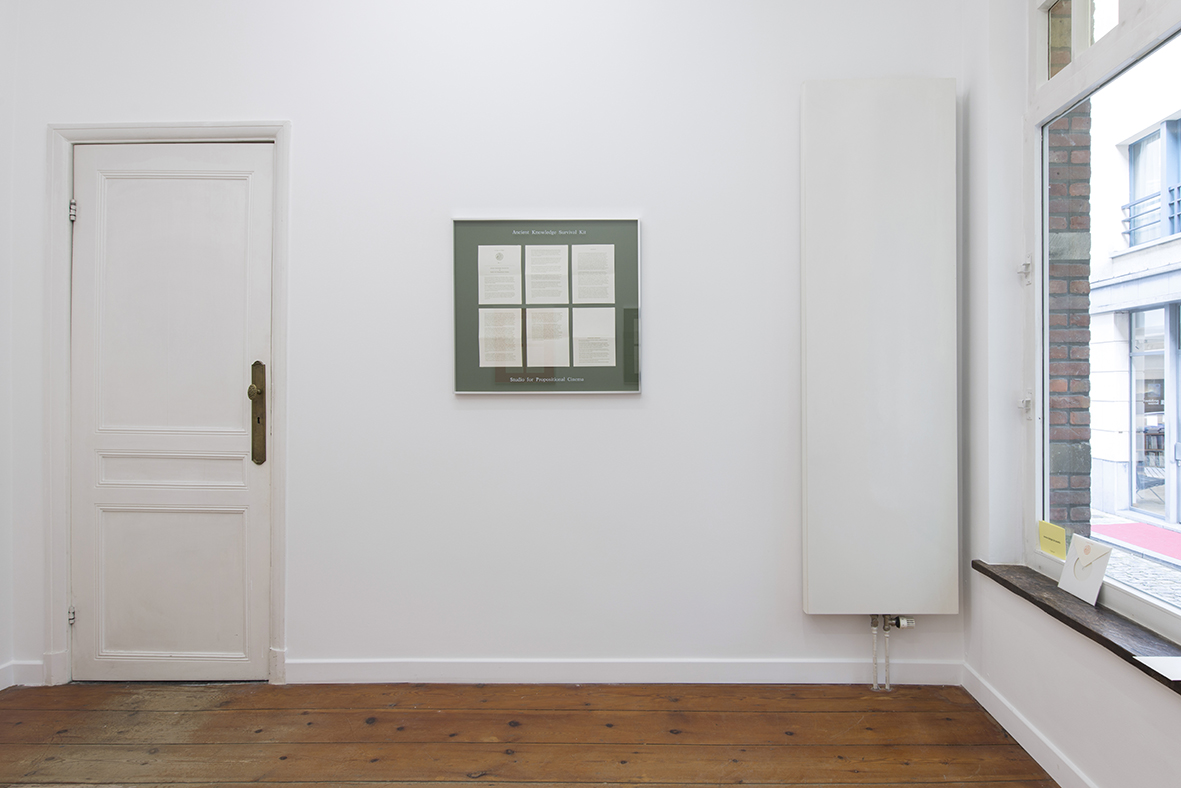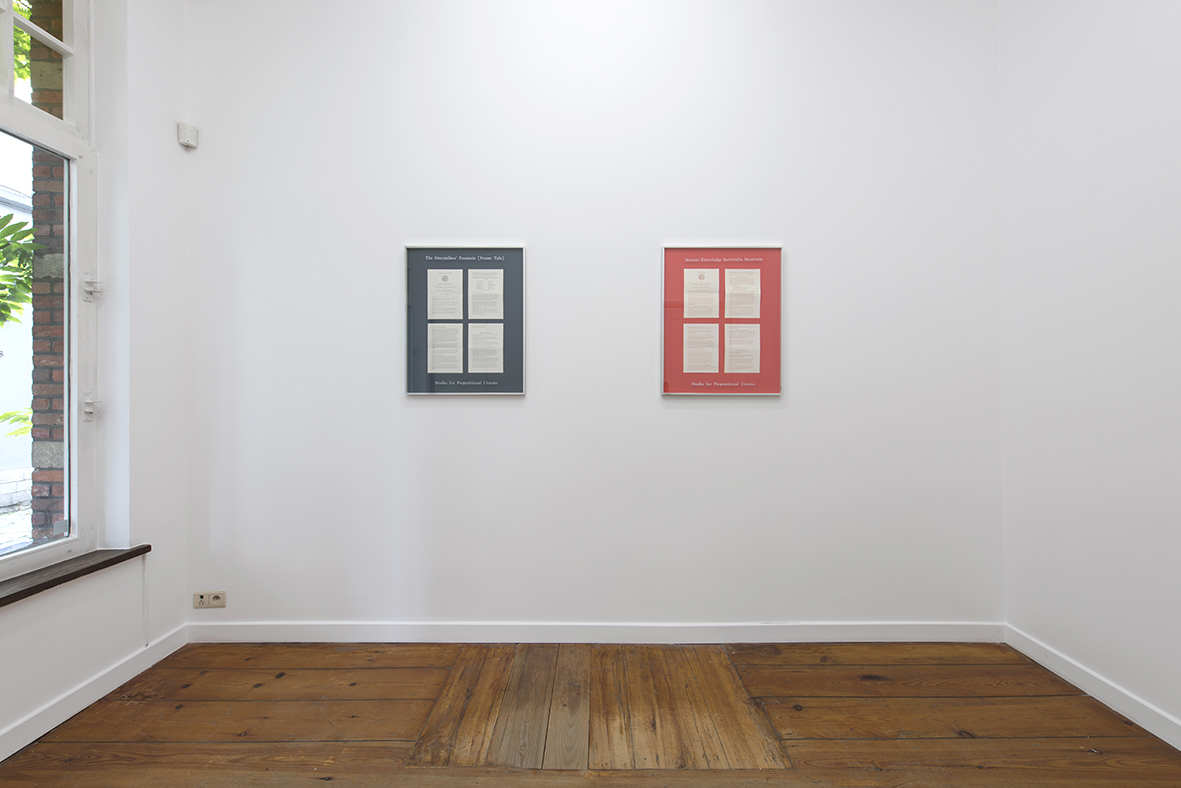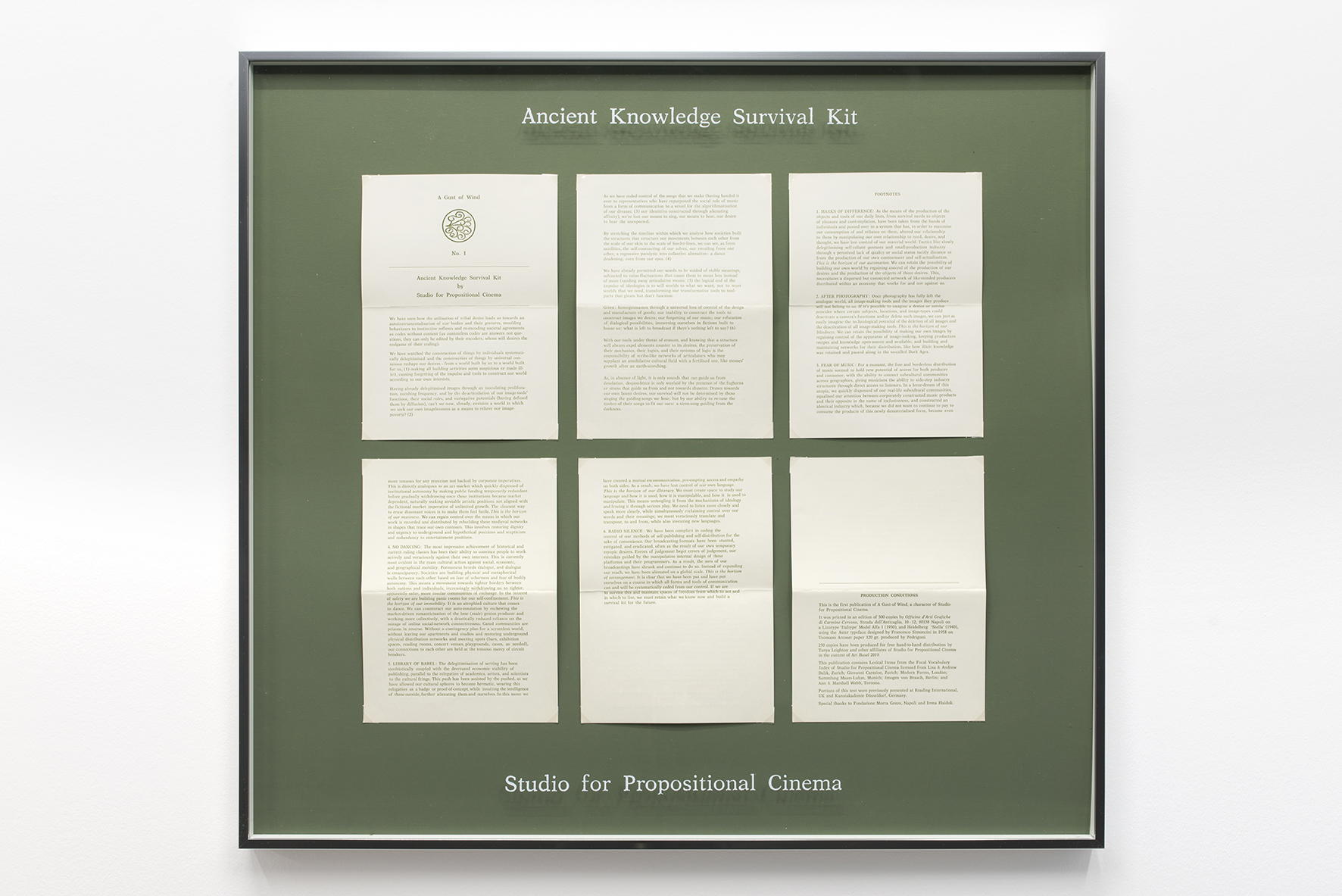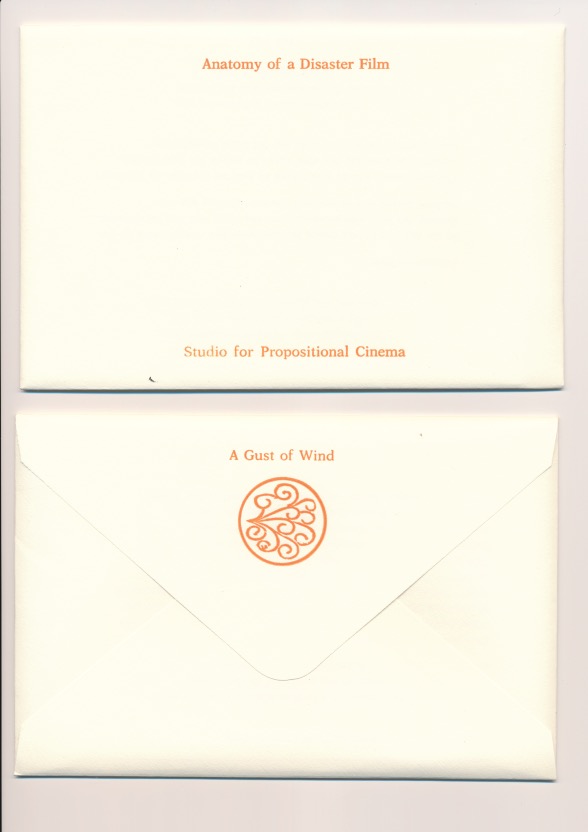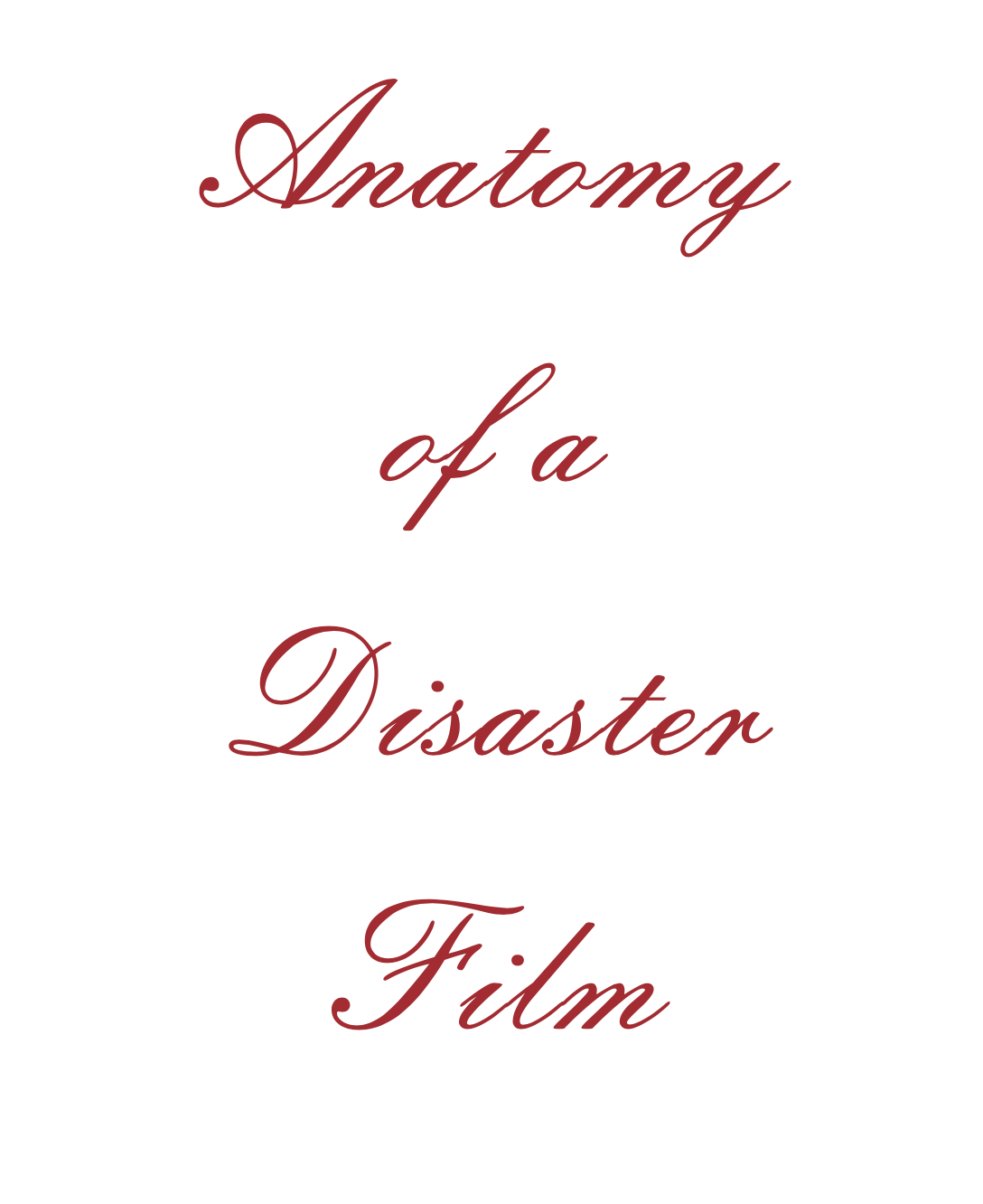Writing on works like RELAY and UNTITLED by Paul Czerlitzki, included in the artist’s show at BEIGE, brings back images of various Volcano eruptions and the traces they leave behind. On one image, the totality of what used to be a village was completely covered by masses of light gray dust. The interiors of a kitchen, along with the shapes of cans, vessels or tables, are covered in a fluffy, thick layer of dust (a sort of mirrored replacement of the real object) as a result of the earthly breathing. Only for a small moment, before it disappears again, through a wind or touch. While after time the ashes lower from the air to cover various surfaces, liquid stone, on the other hand, shapes the landscape and changes it by pressure. Moving without control, only guided by the multifaceted shapes of the ground. There is something profound yet fragile about the very nature of materials that make themselves space and how they move through the air and on the ground.
Paul Czerlitzki works as a painter, guiding pigments and paint in an indirect manner that balances between control and letting go within the boundaries of an artistic program that he has developed over the years. It allows variations in a minimal outline, concentrating on the basic principles of painting. His methodology, which he keeps coming back to in long series of works, allows him to operate as an instructor for the materials he works with. The artist takes paint and a painterly underground (canvas or walls), the very fundamentals of the medium, as his main working material, and deconstructs and maneuvers around the highly charged terms and histories of painting.
Shaped by the process of time and embracing chance, all works in his series RELAY consist of unfixed pigments deposited on canvas, welcoming traces and damages to enter the thin layer of dusty paint, allowing its fragility ever further. Only through those events, the very nature of the materiality becomes visible. With another layer of pigments (often in a different color tone), the works are being revised; scratches and touches that resulted of handling, are covered by another layer which results in partly deeper color and half-hidden traces. The monochrome paint thus creates several shades (in this exhibition it is red), by different amounts of paint applied. This creates certain depth on the surface, thicker and dark amounts of paint, and very thin and light layers.
A similar strategy was applied for the wall drawing UNTITLED: While pigments flow and eventually touch the canvas in RELAY, paint is sprayed through canvas that was previously fixed onto the wall, leaving traces and touches of paint back on it, carrying the irregular patterns of canvas, sort of as a negative imprint.
Both series combine a sense of materiality that always allows the process to take charge of the painterly outcome. That way, his process becomes part of what the work is, how fast paint dries and what way it behaves. These physical aspects, define the ground the artist created for himself. A space in which definition and process are the main figures in his minimal approach, that is very much site specific, as this exhibition shows.
Dust, which describes not the material itself but rather a time-based process and condition is also reflected in the show’s title: Not That Red. As in: Almost, not yet, in relation, a color, yet not quite there, a timely stretch, description, condition, a function, a gap?
Text by Carla Donauer



